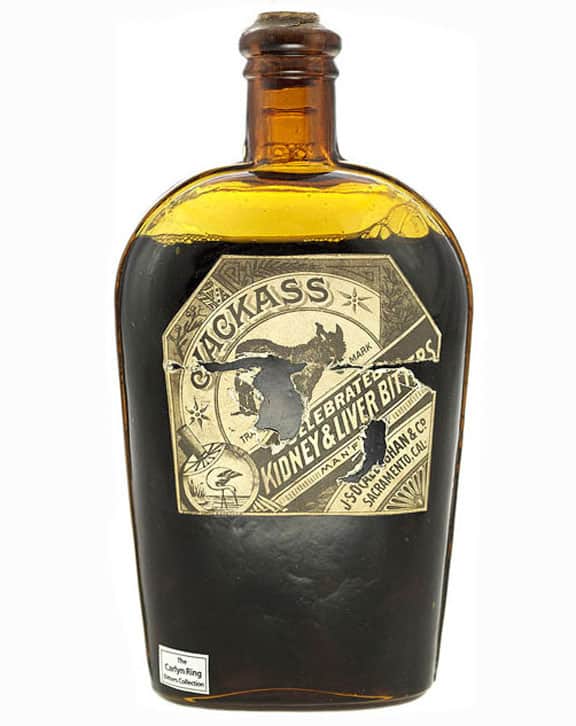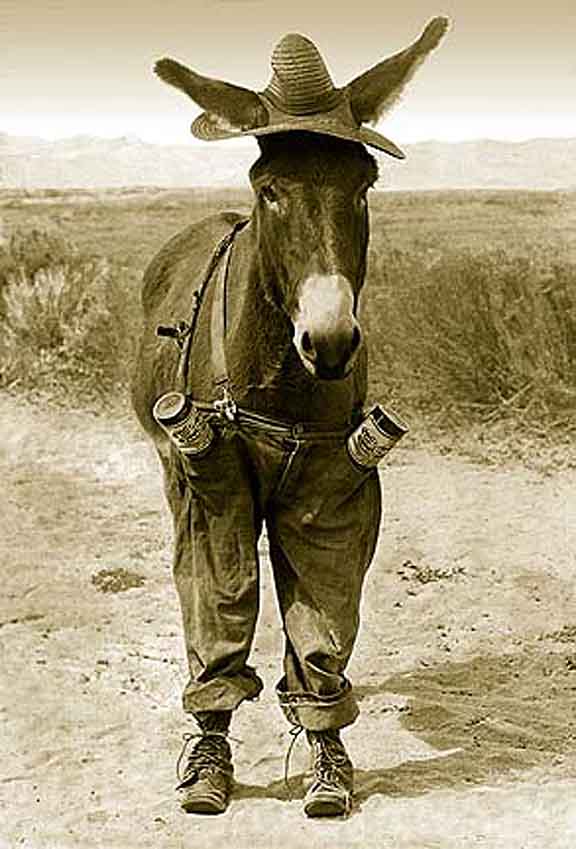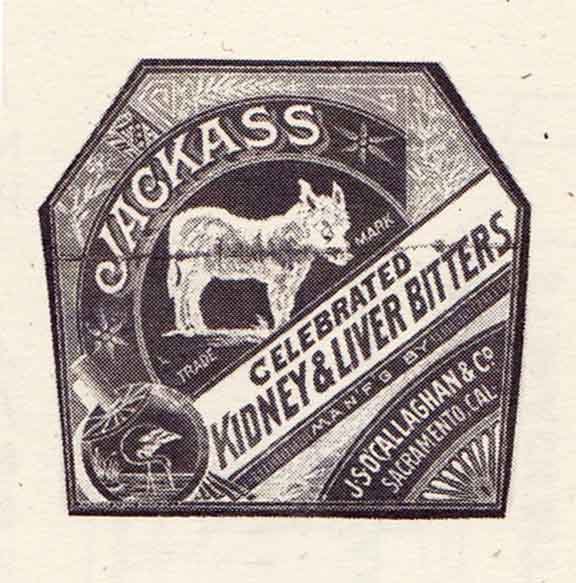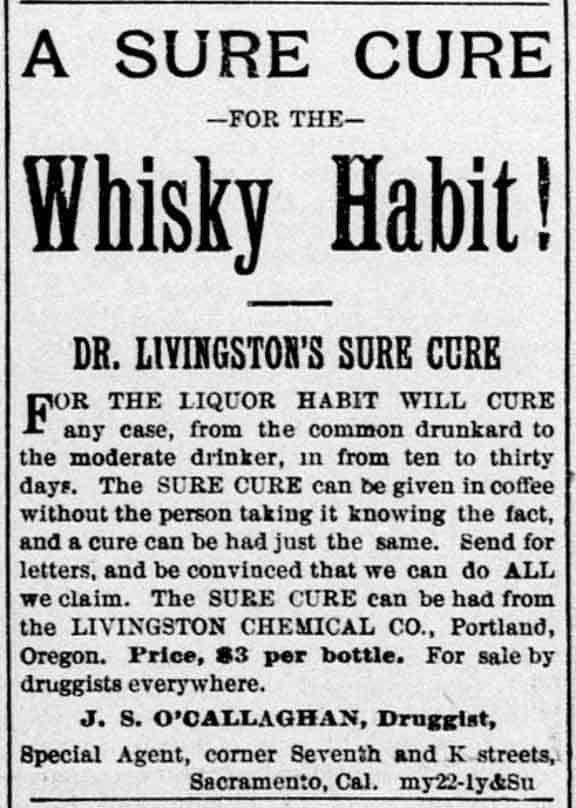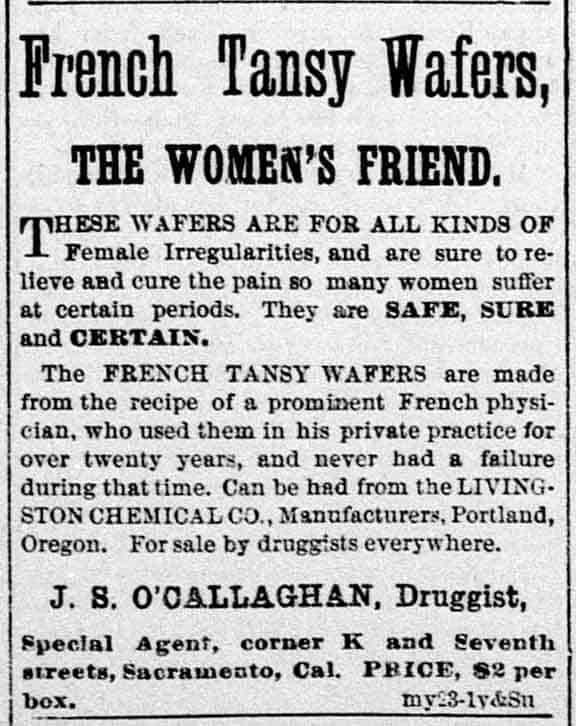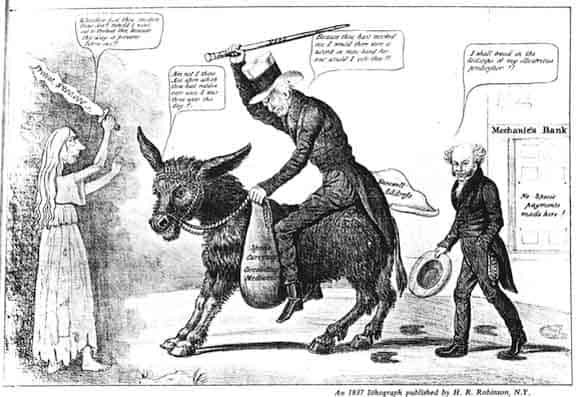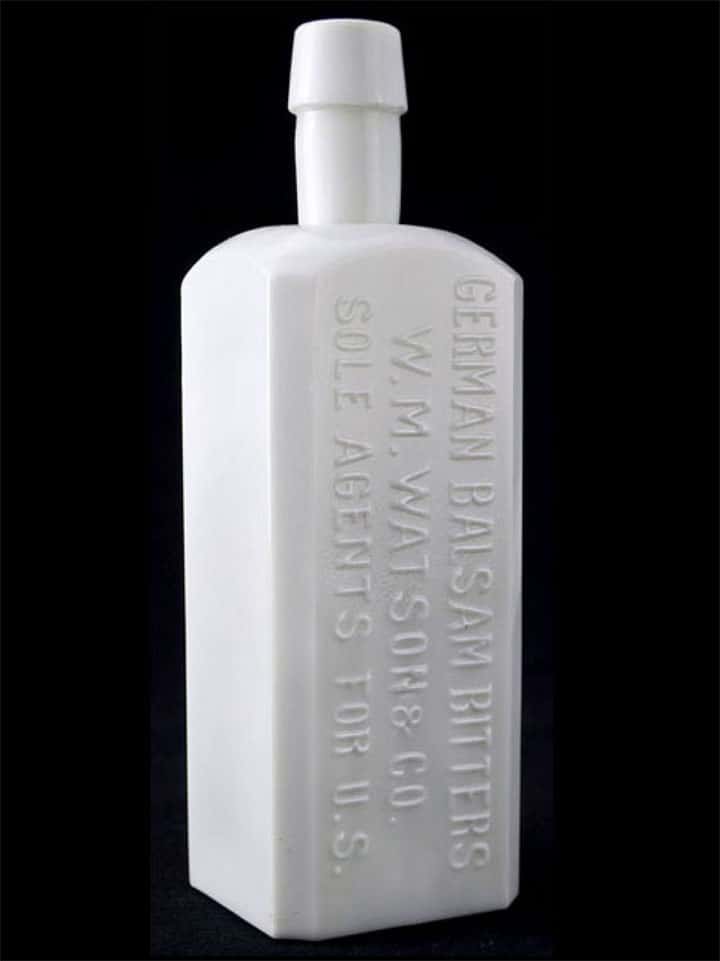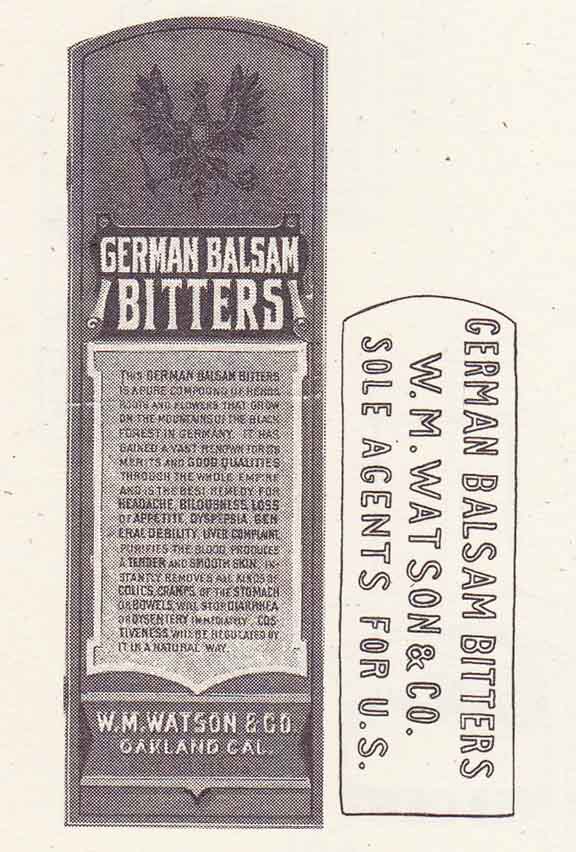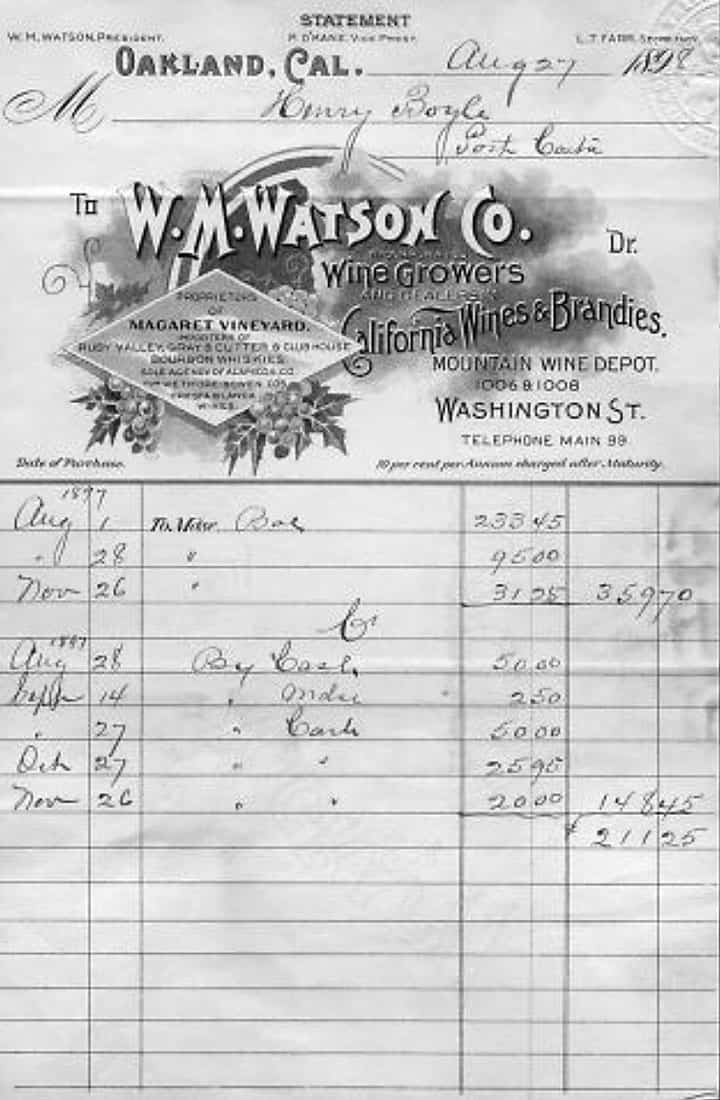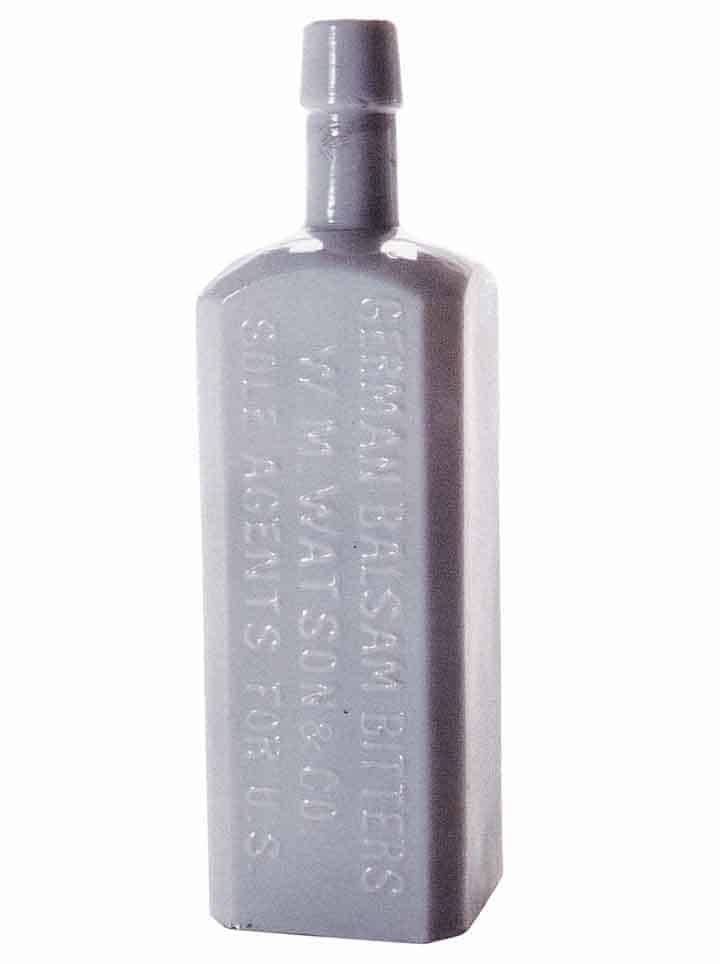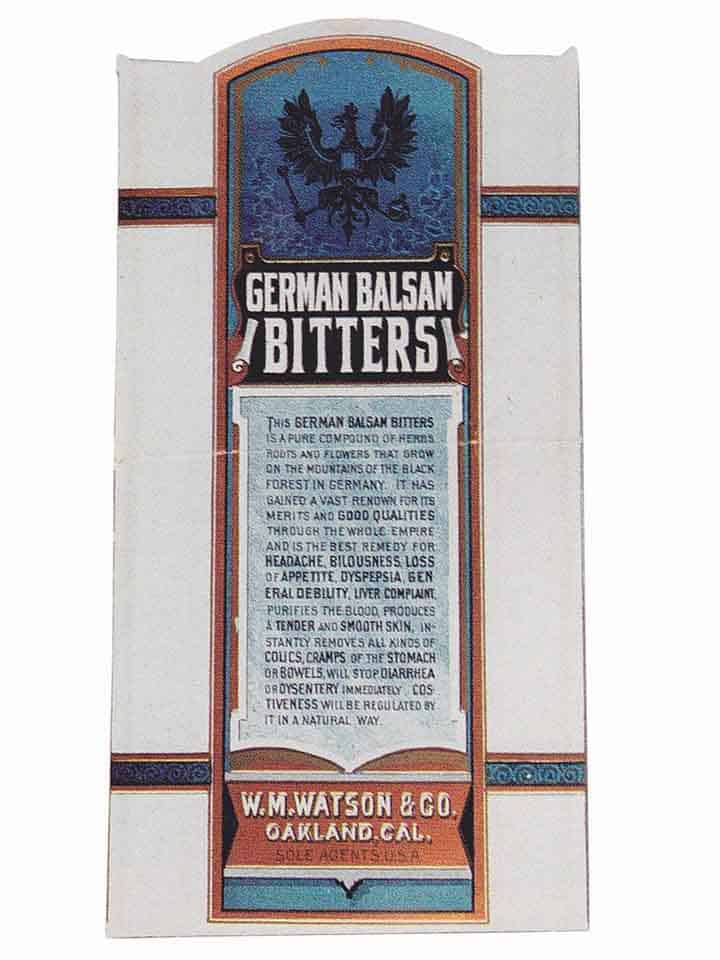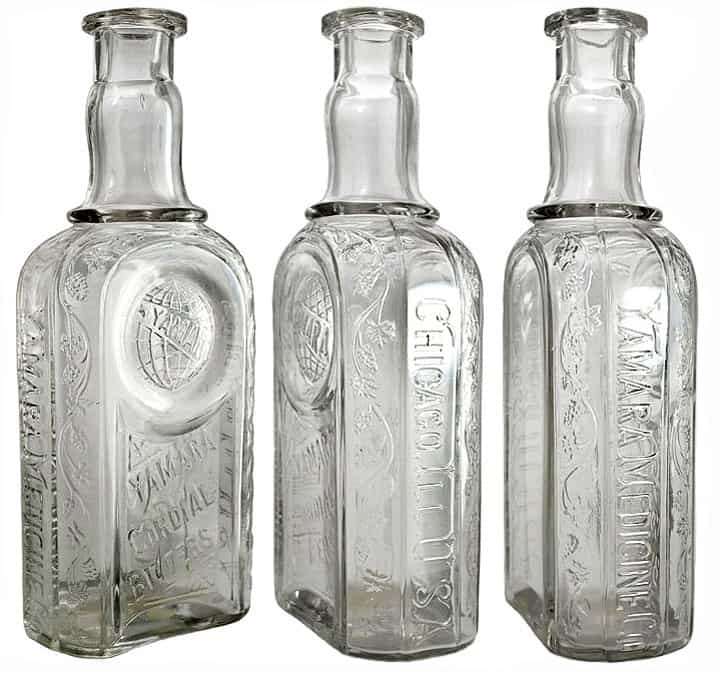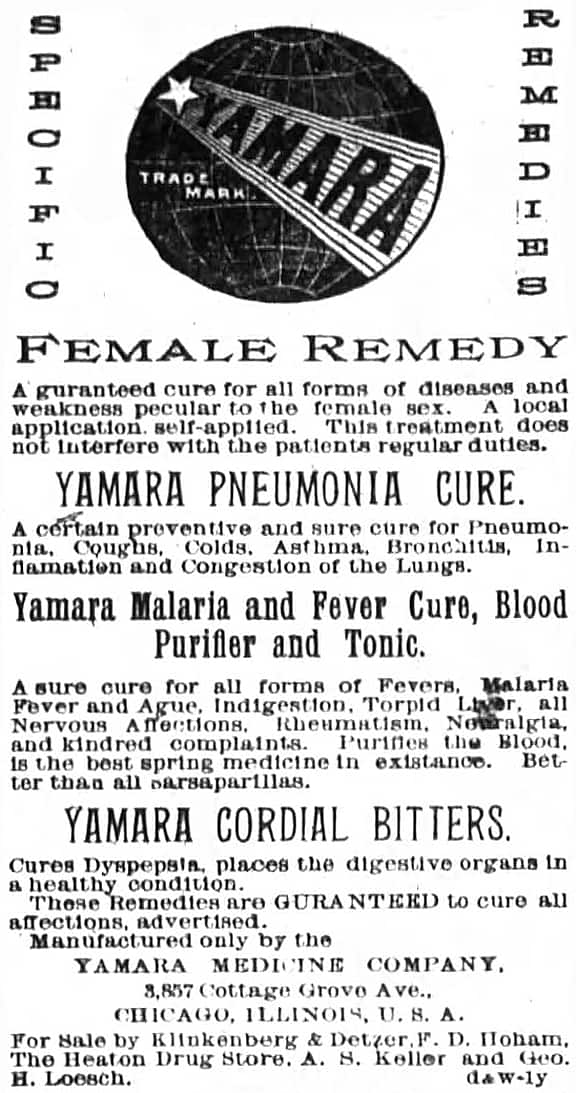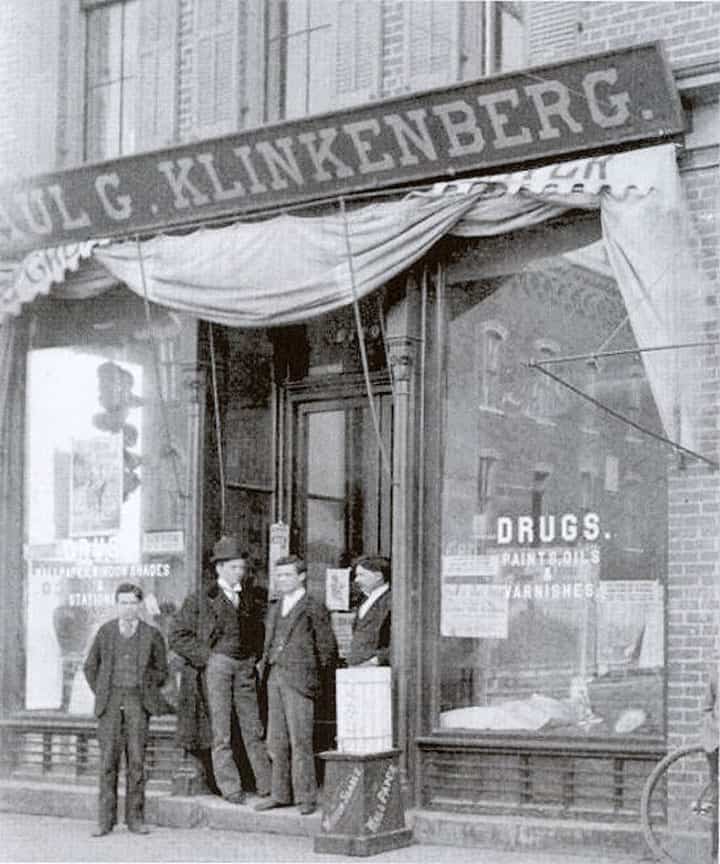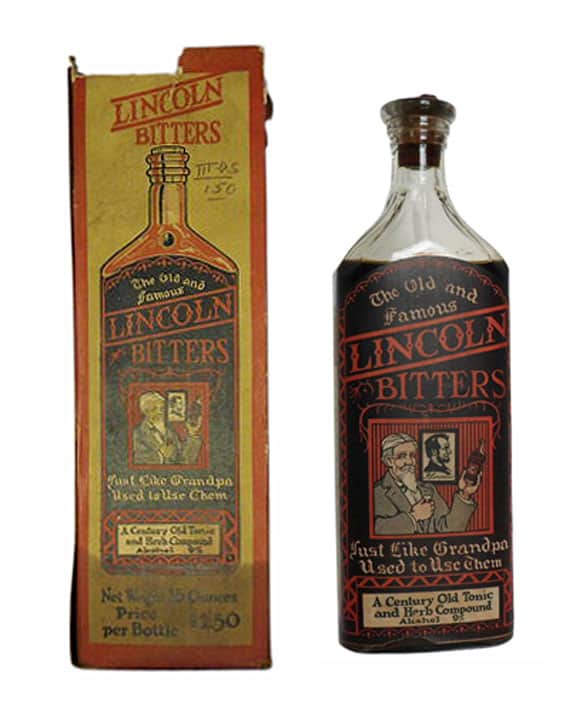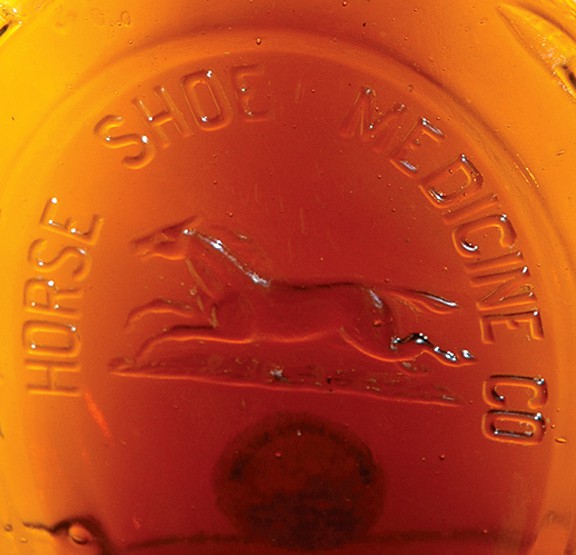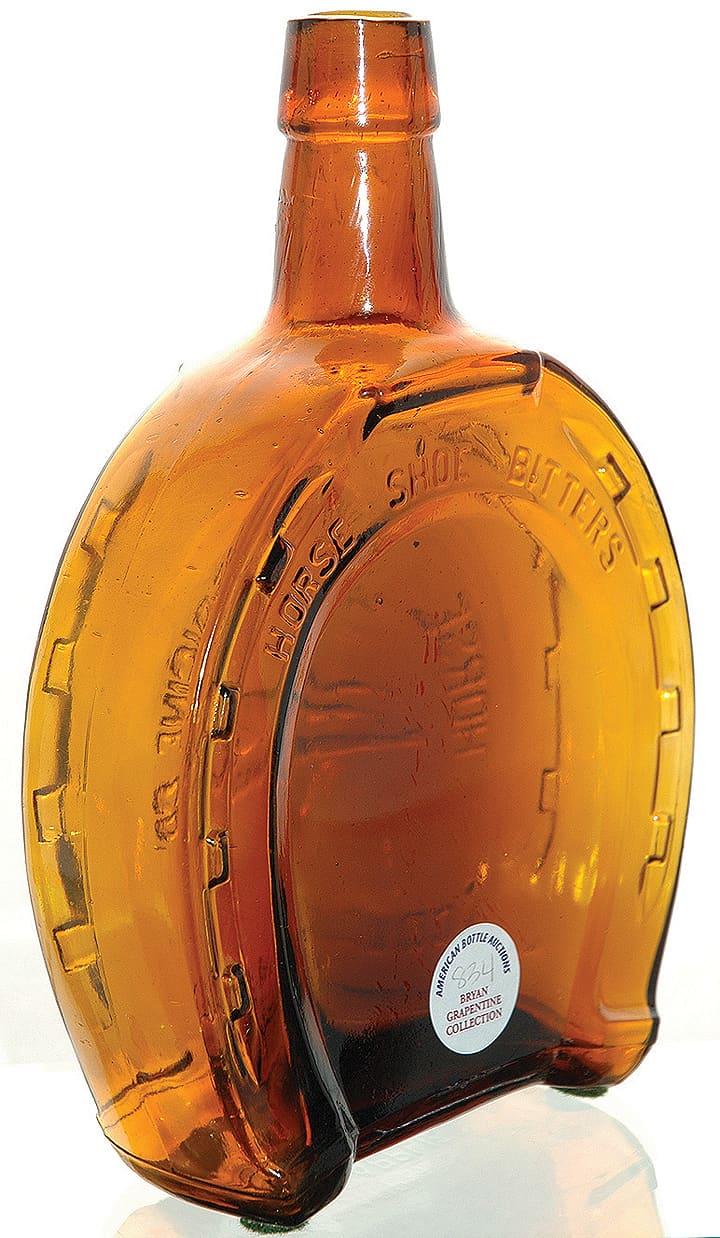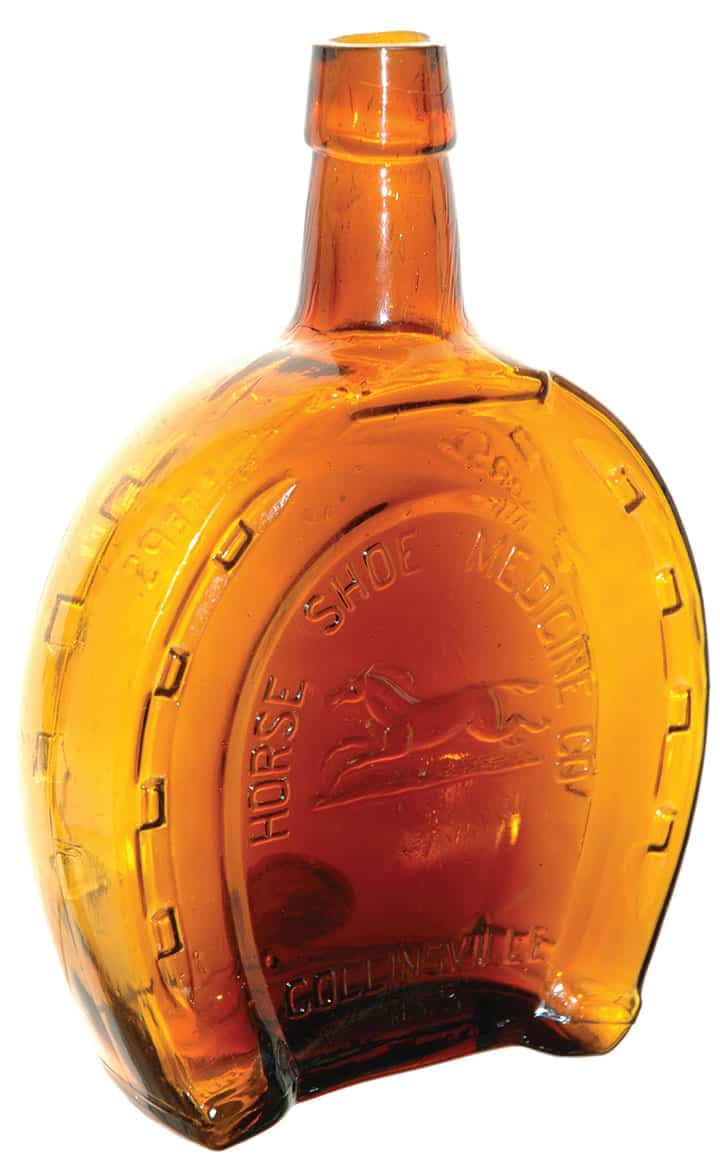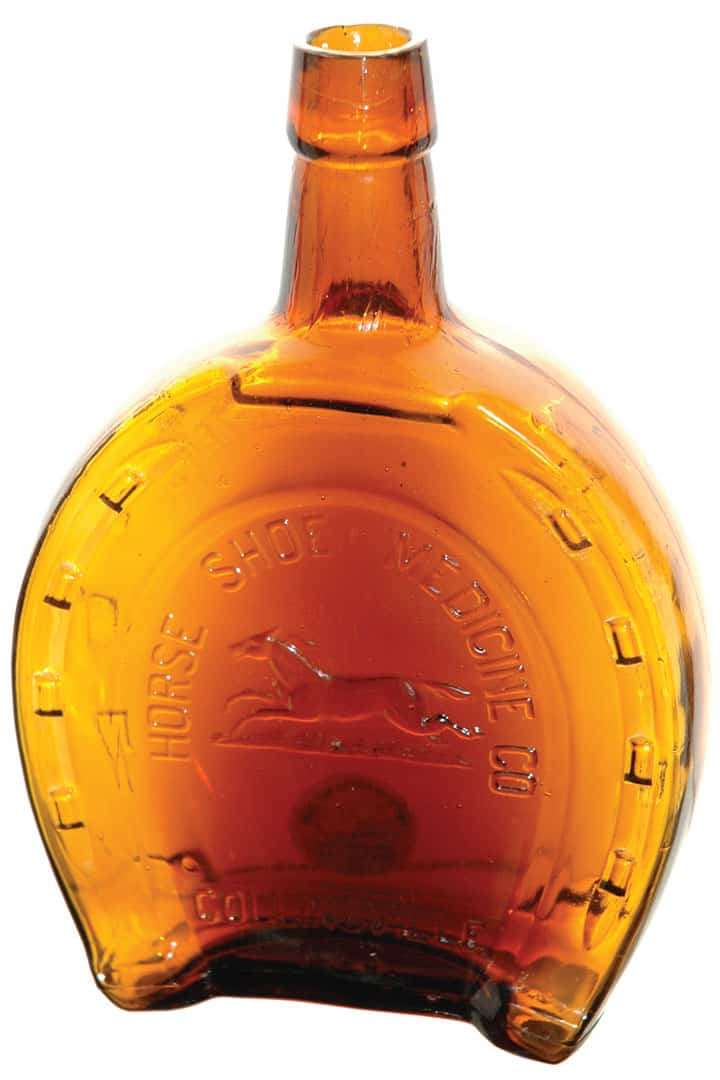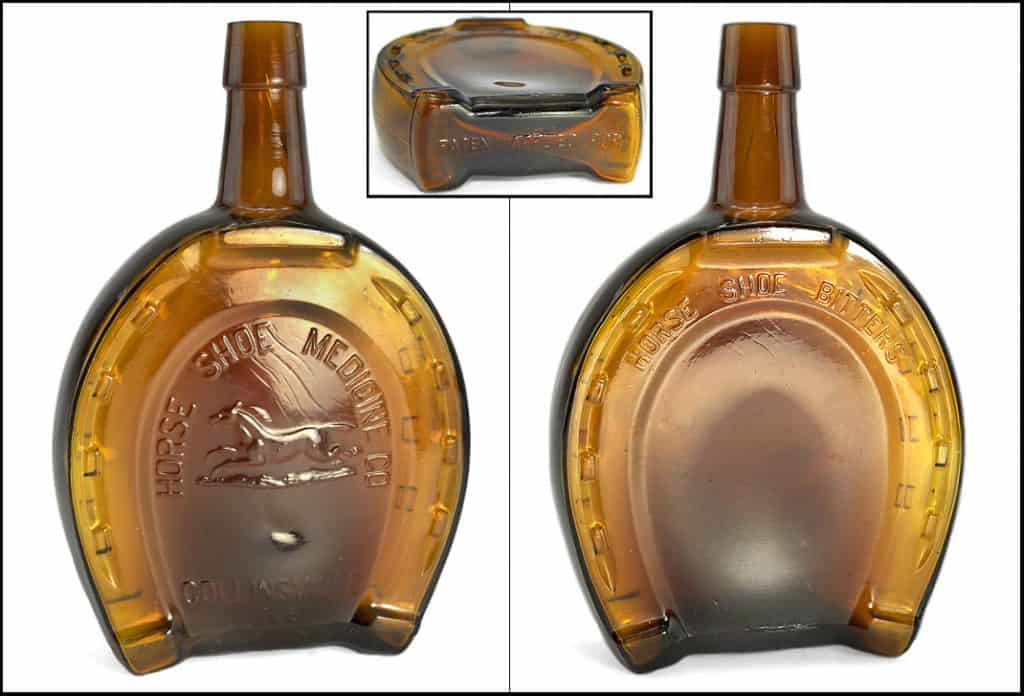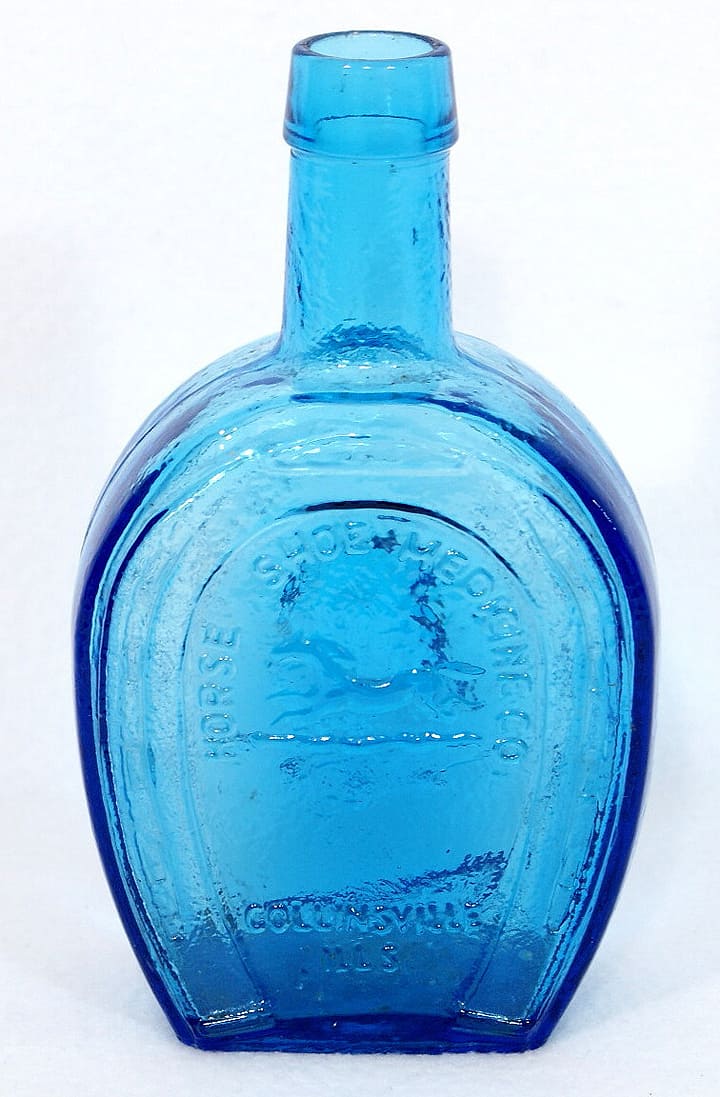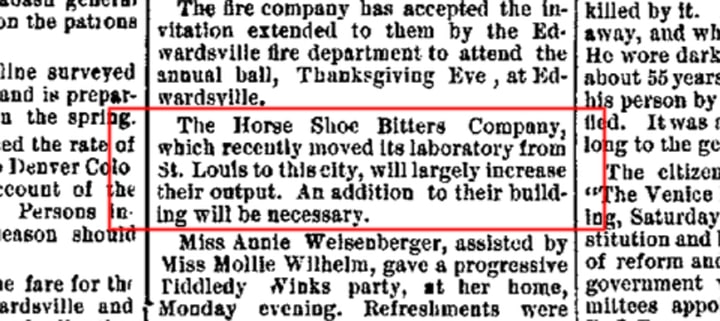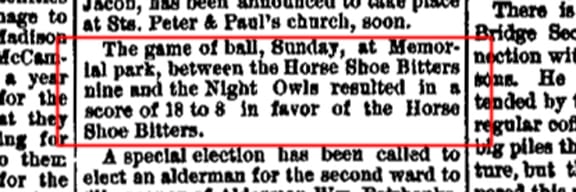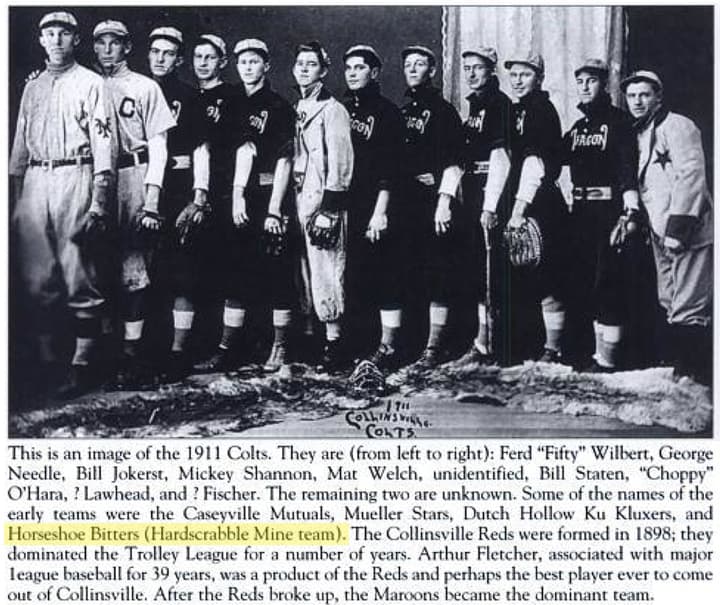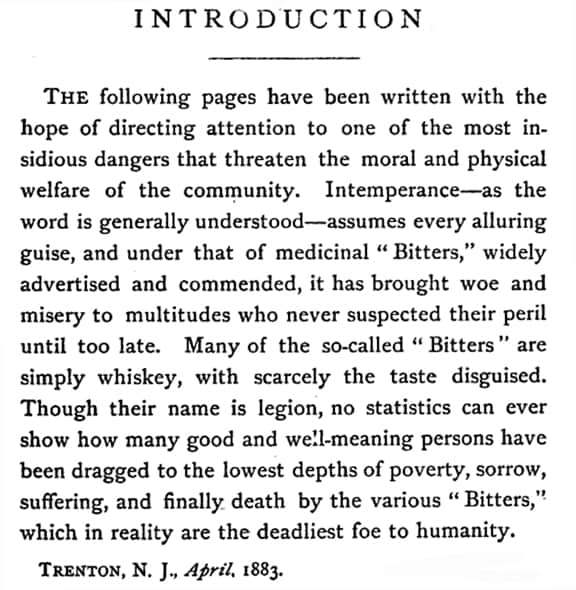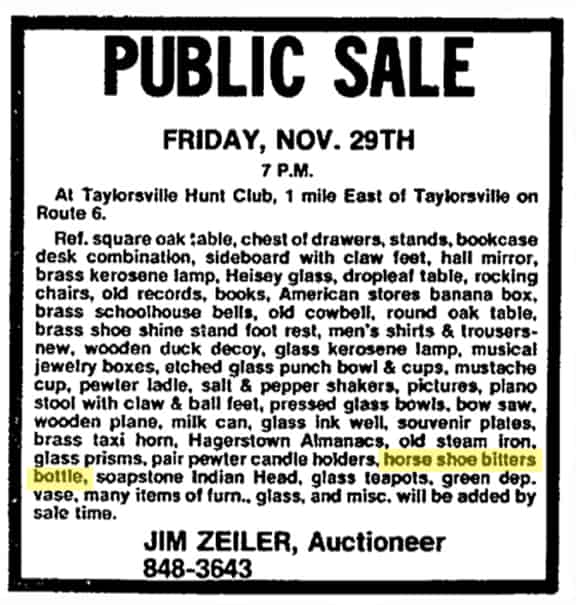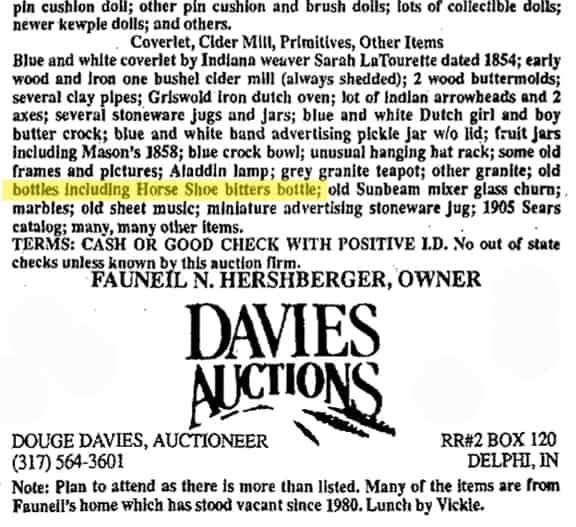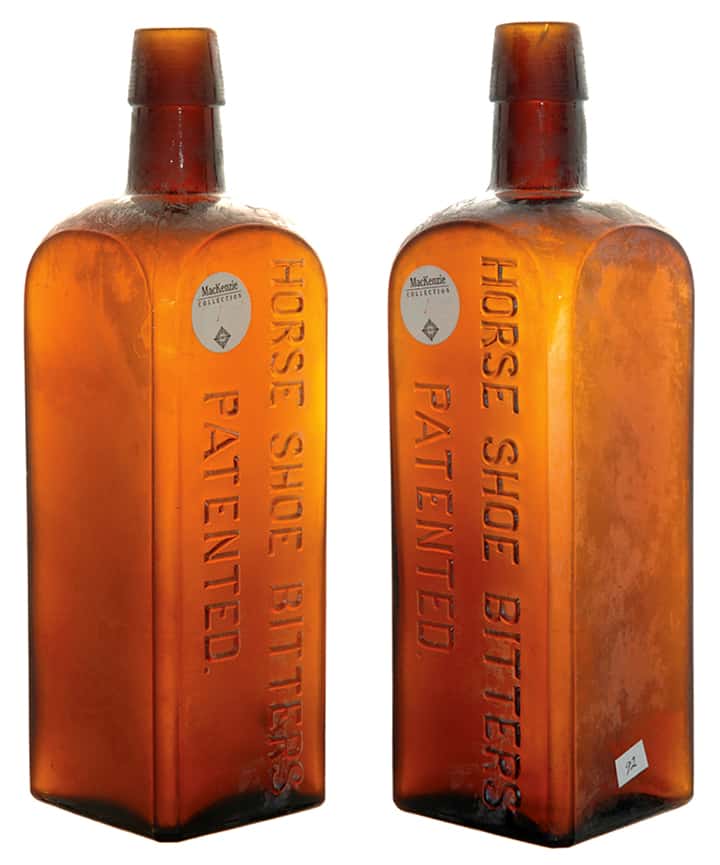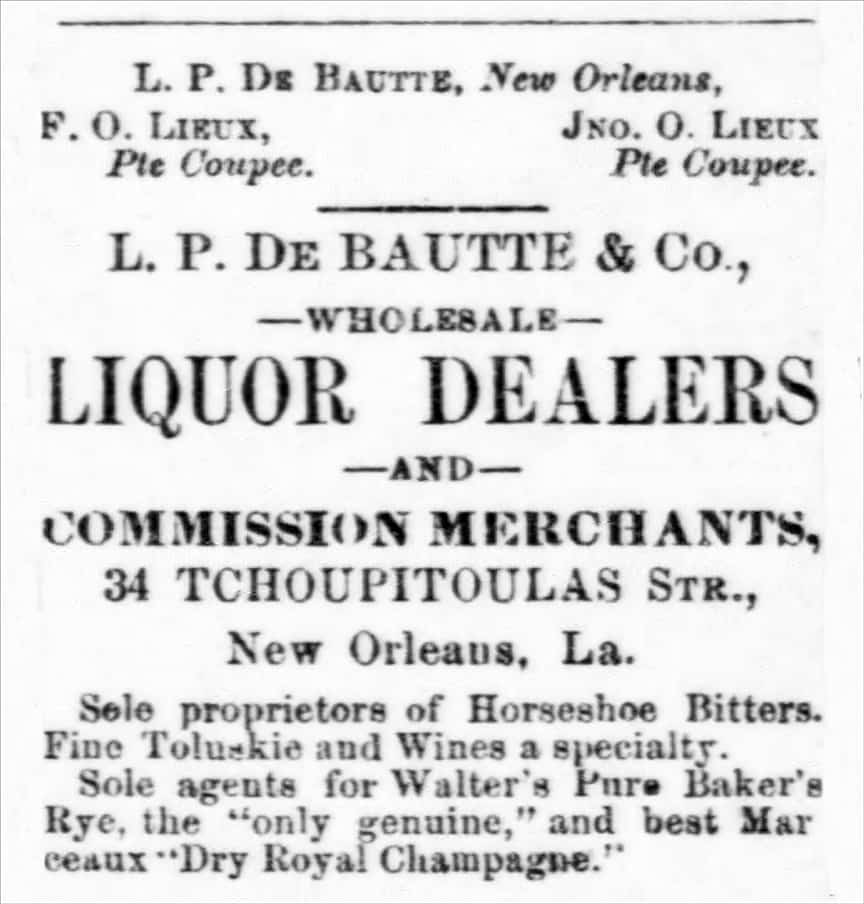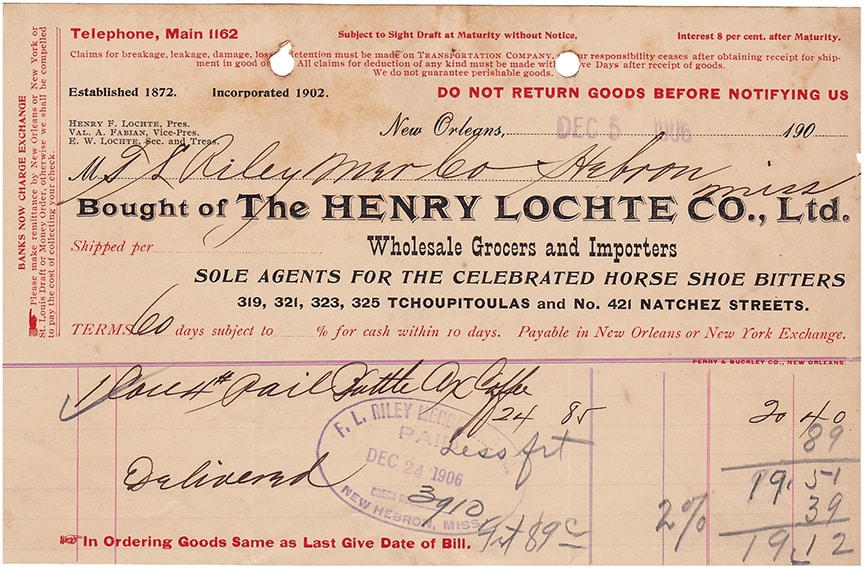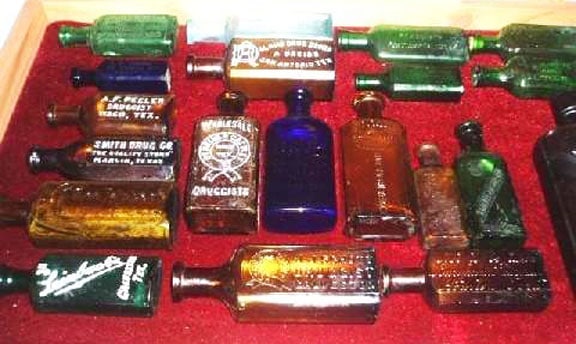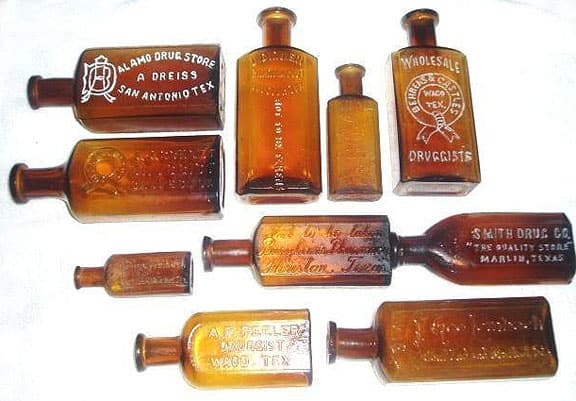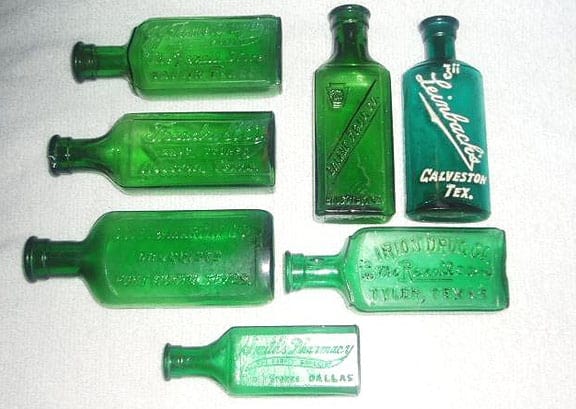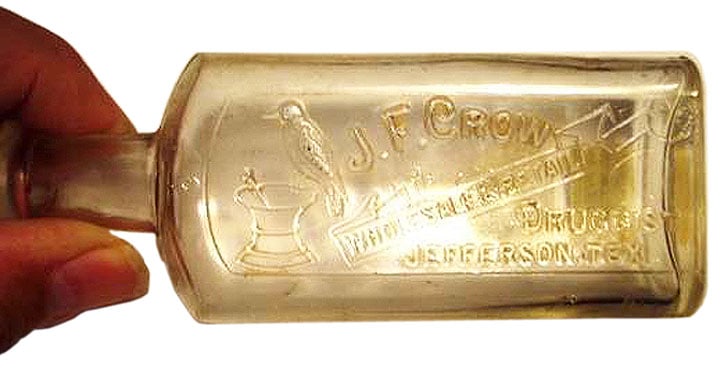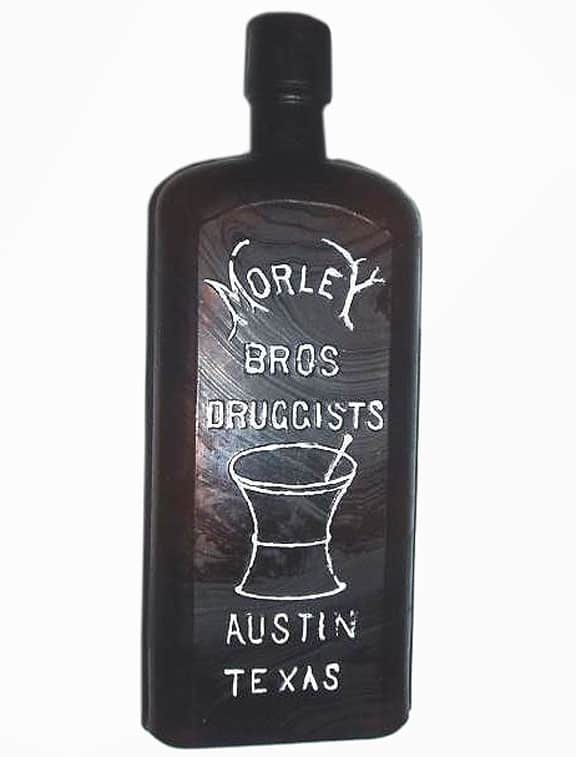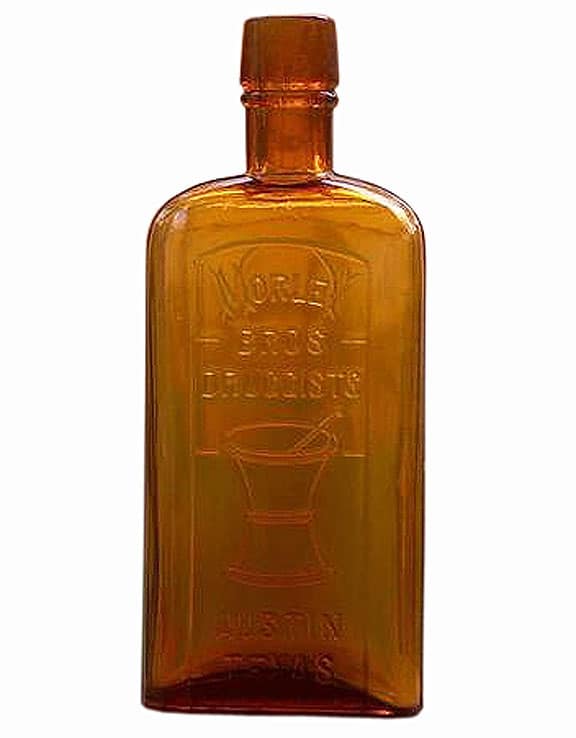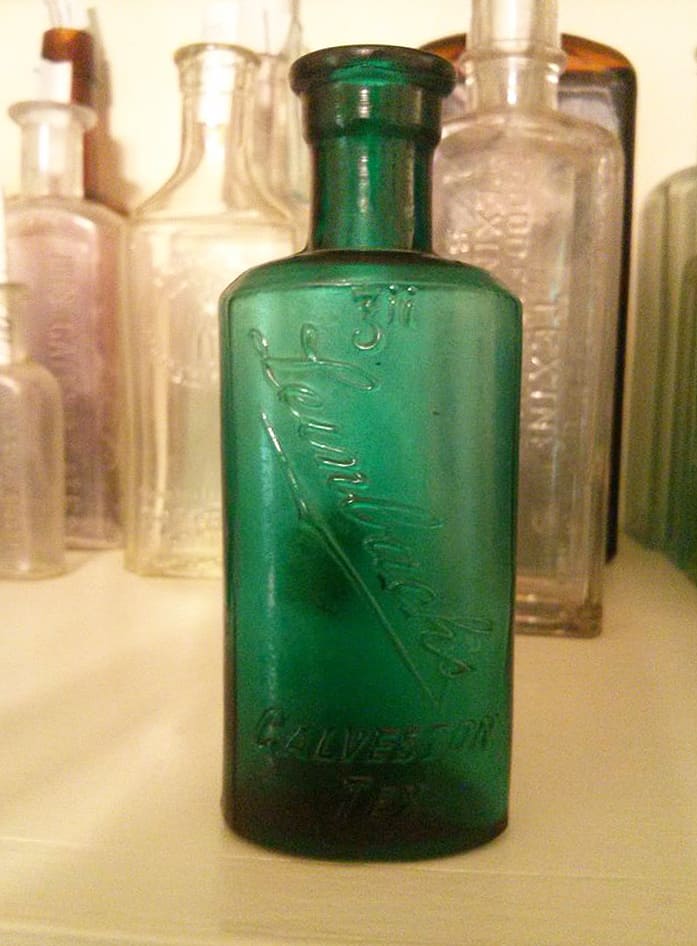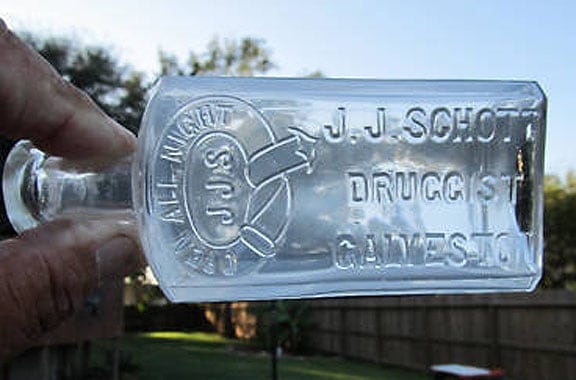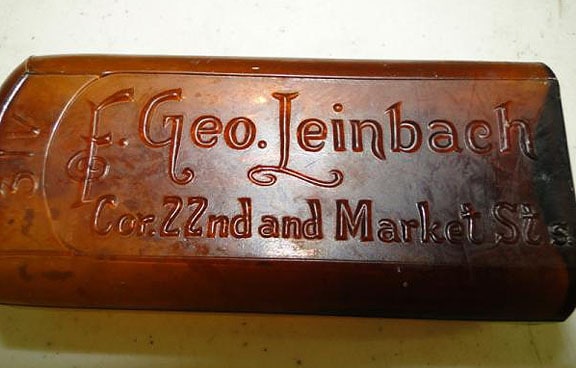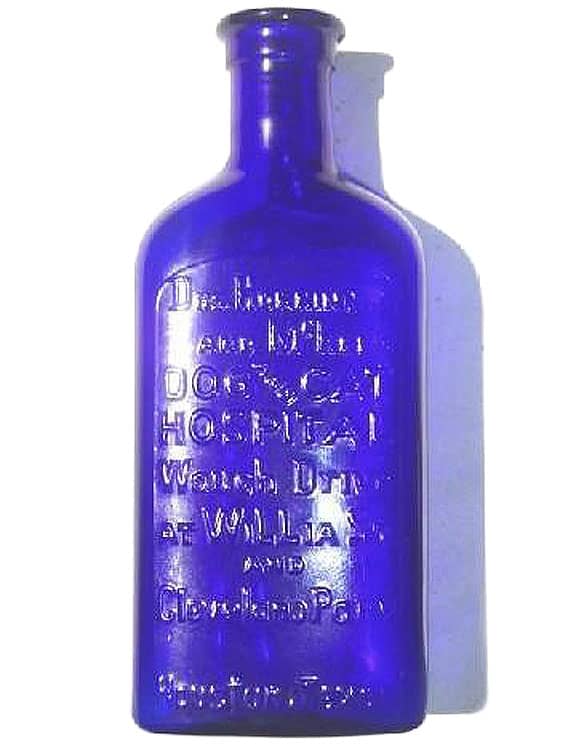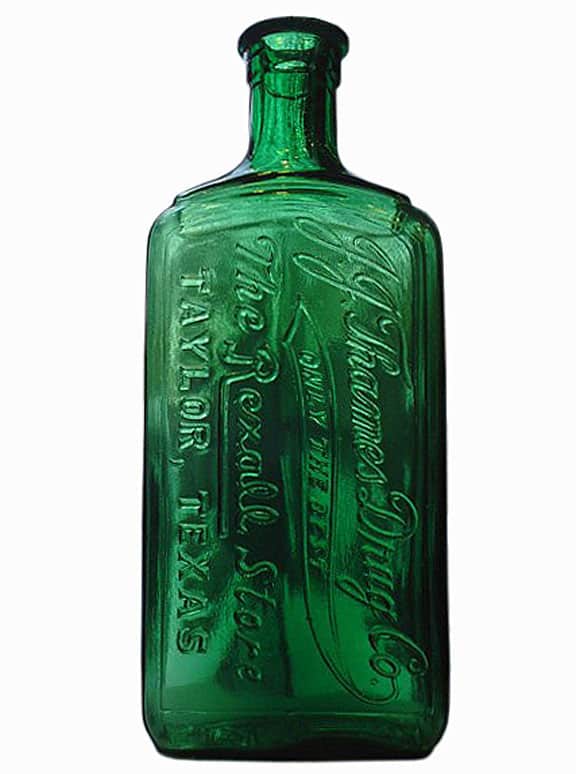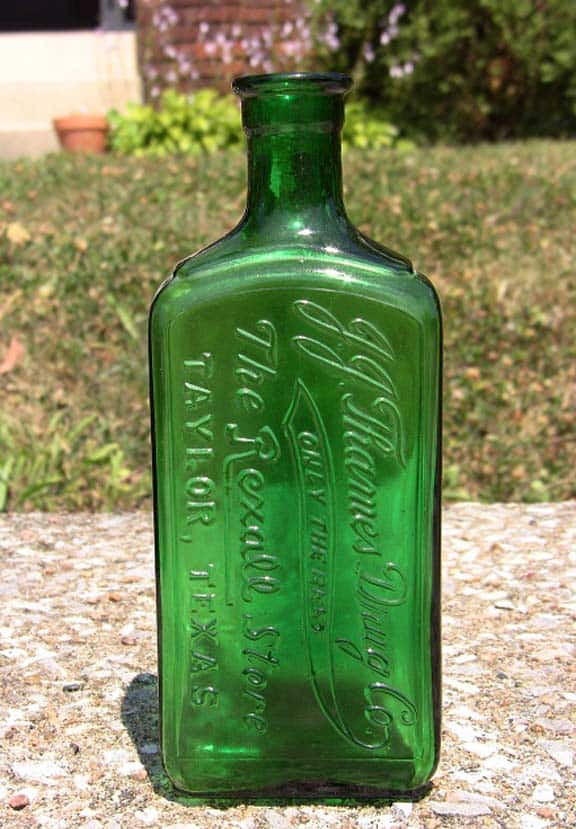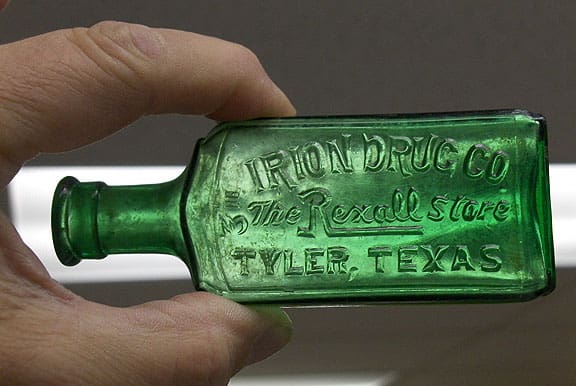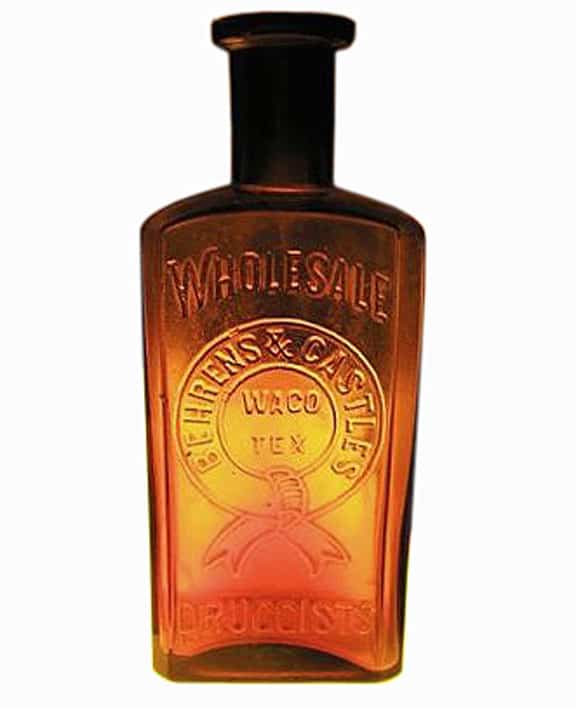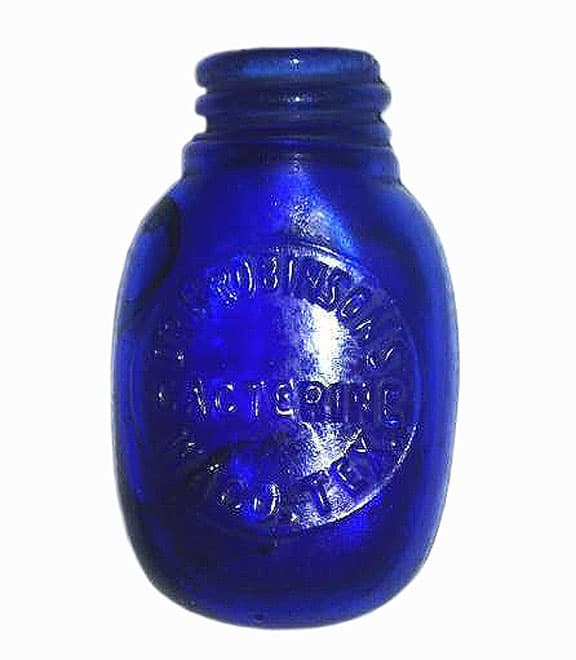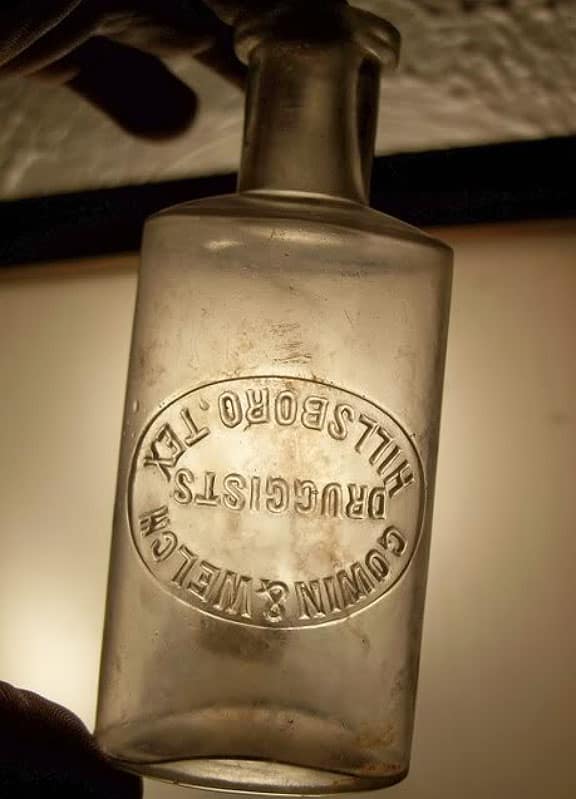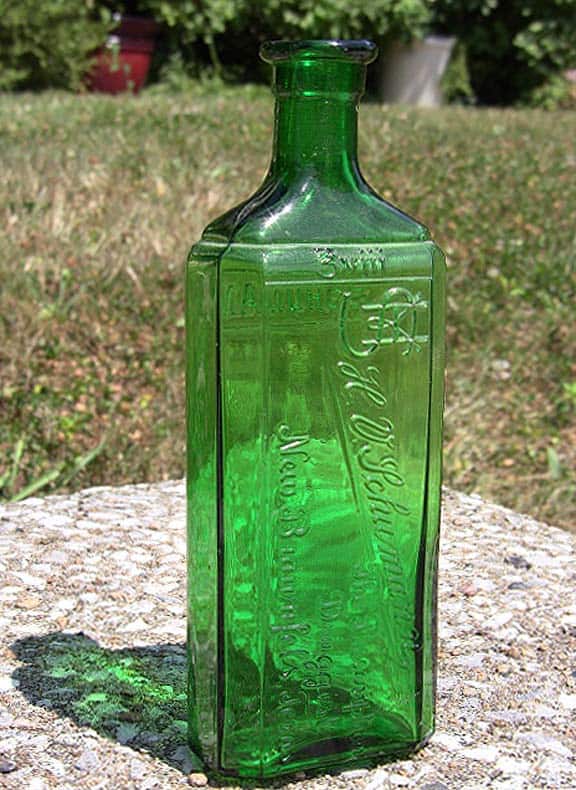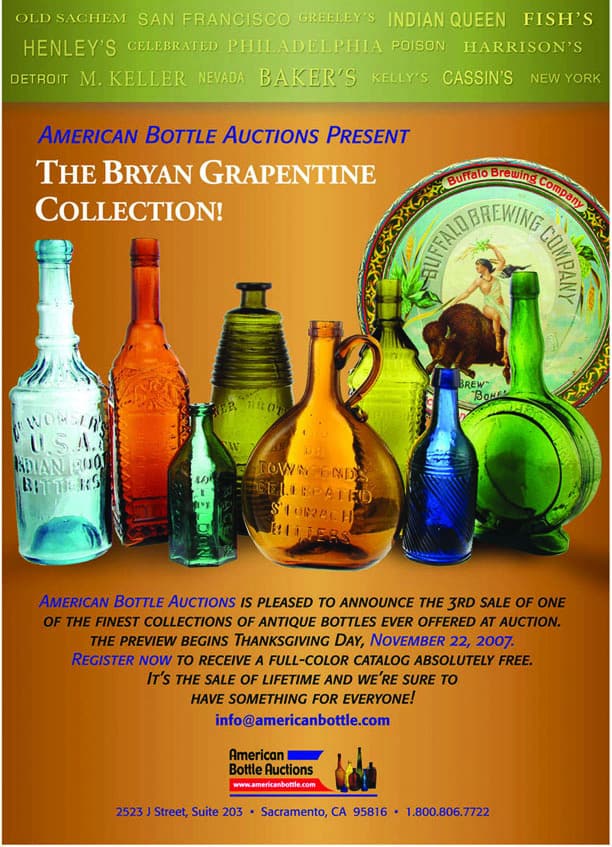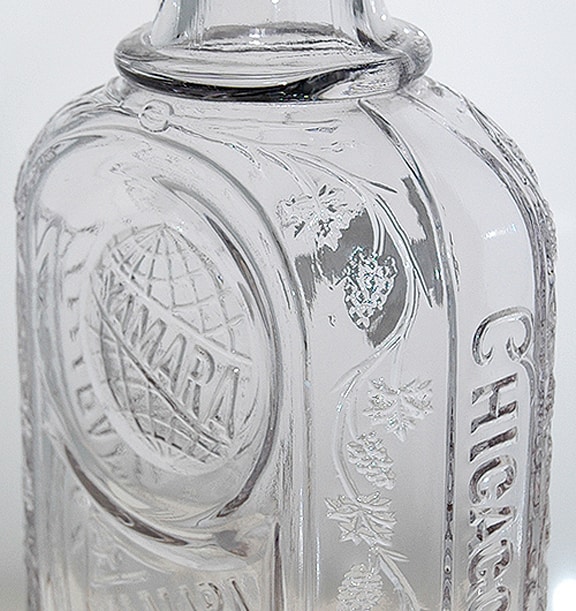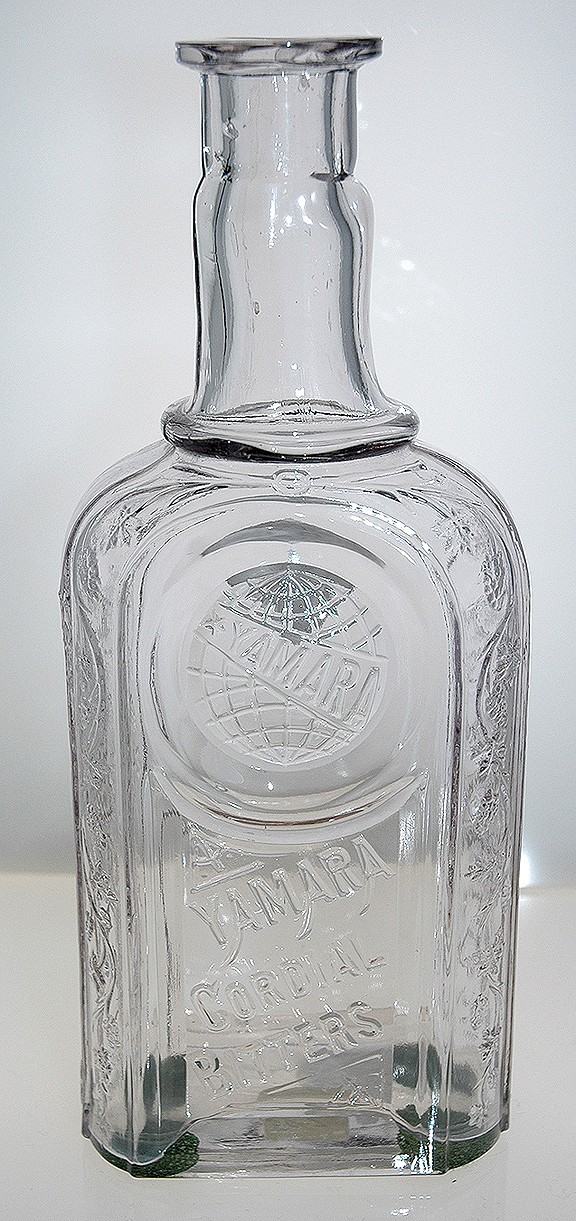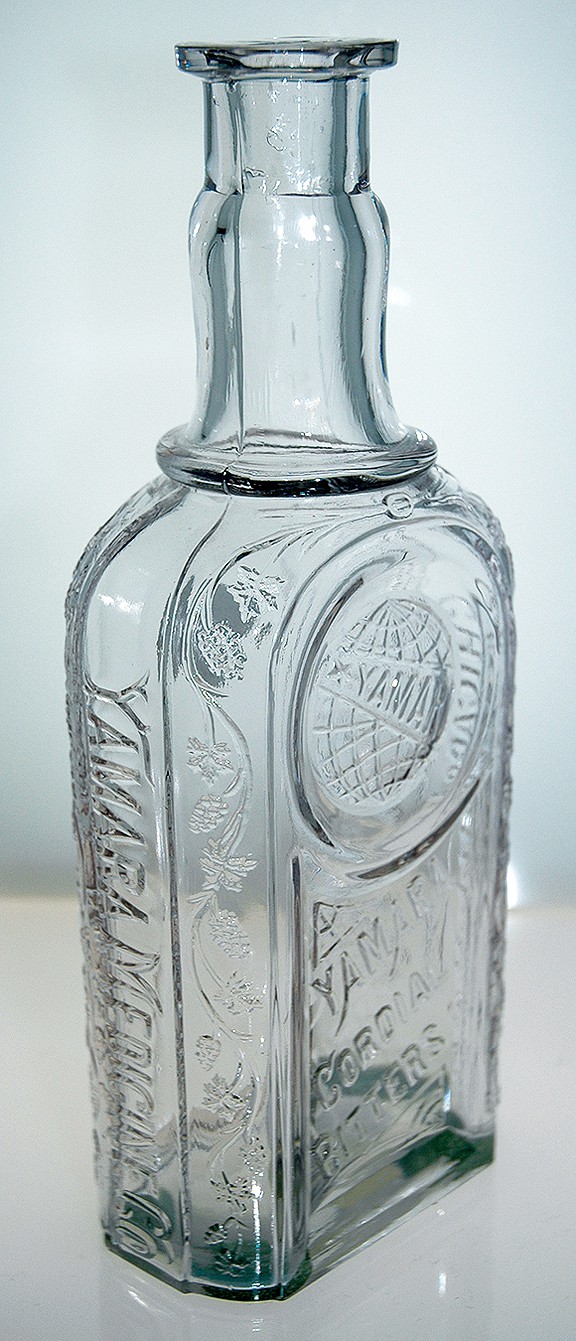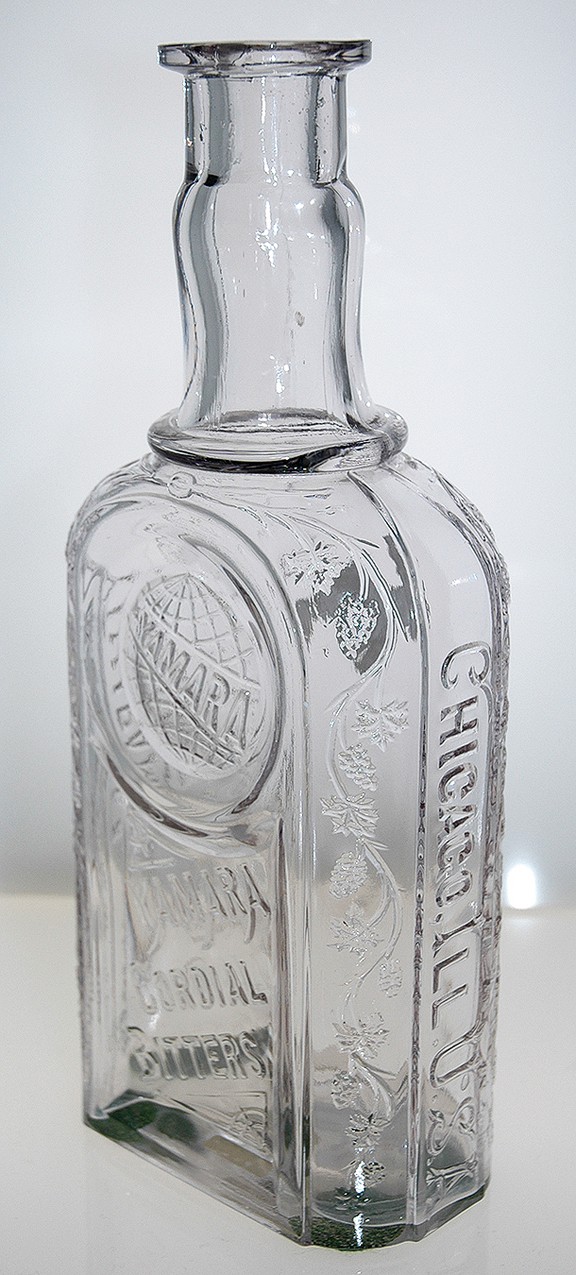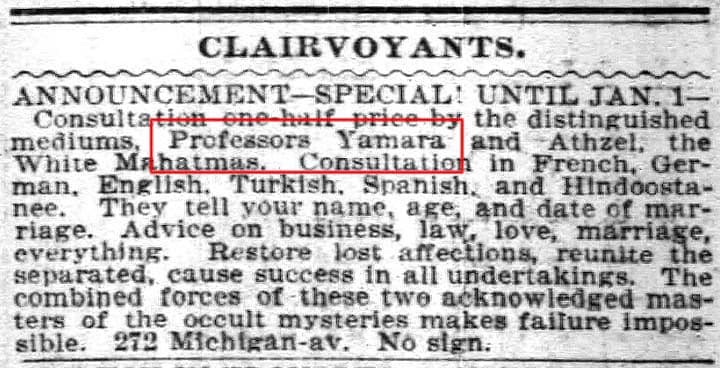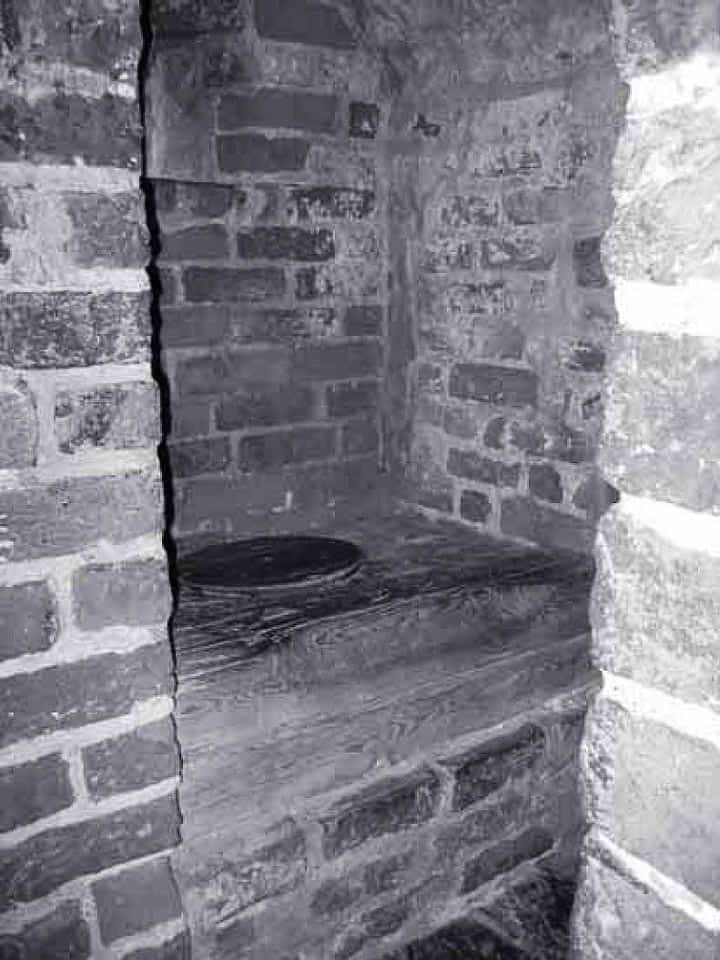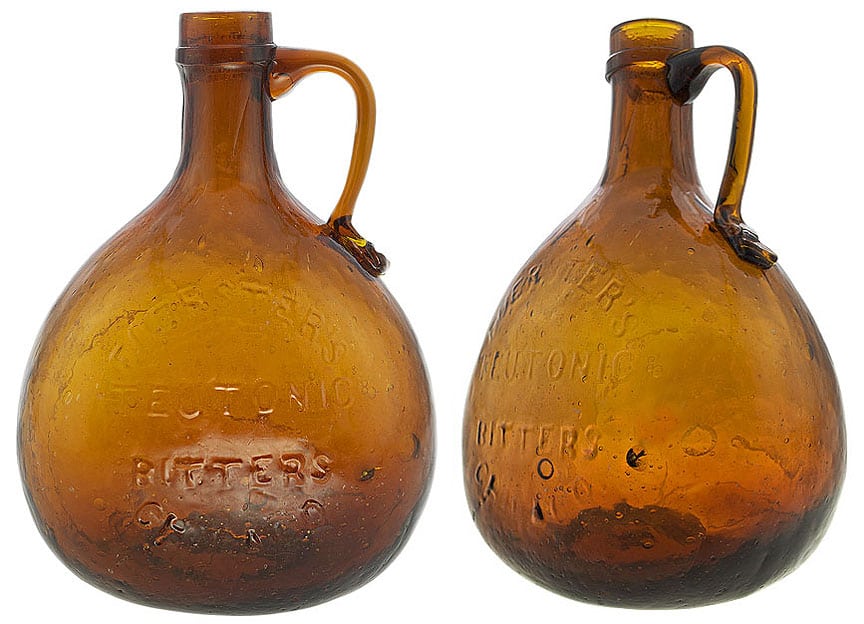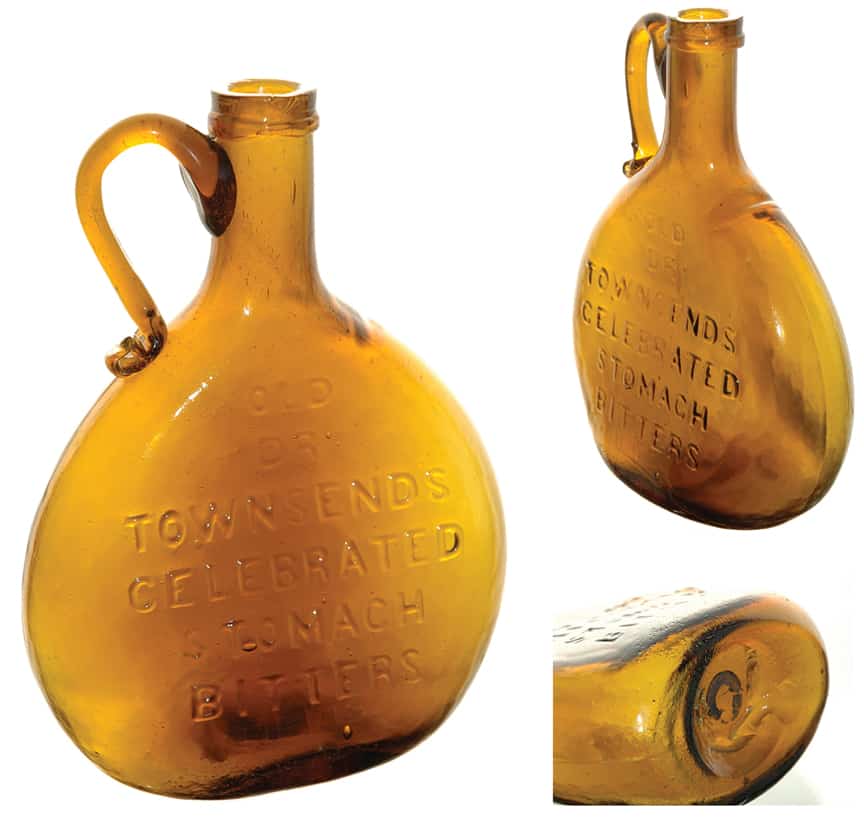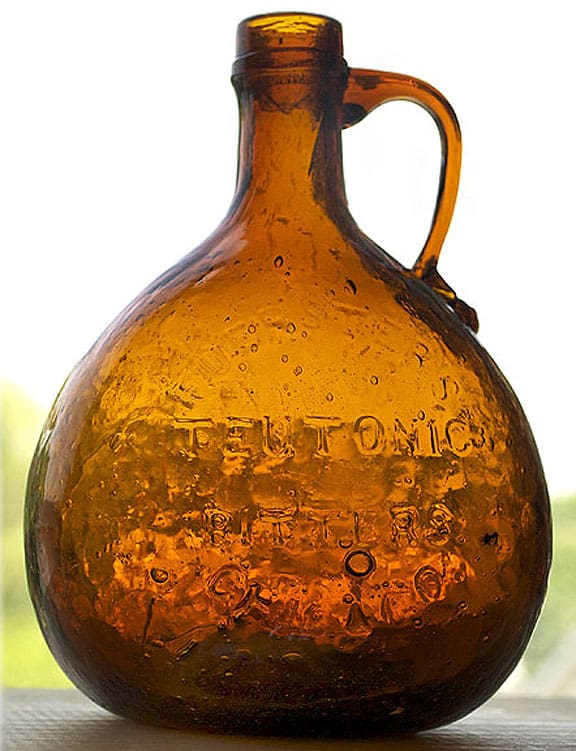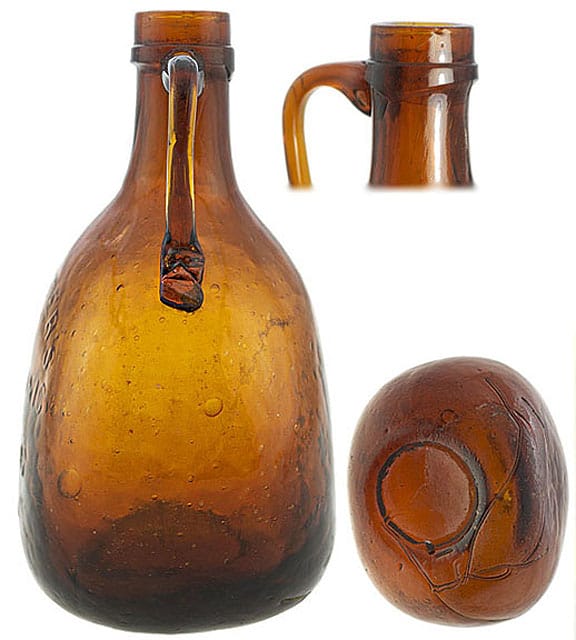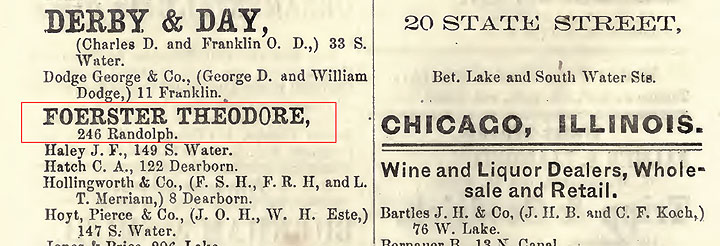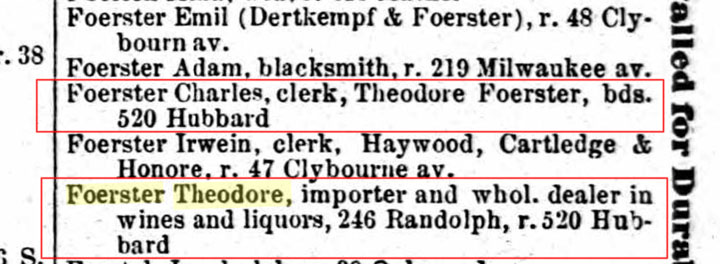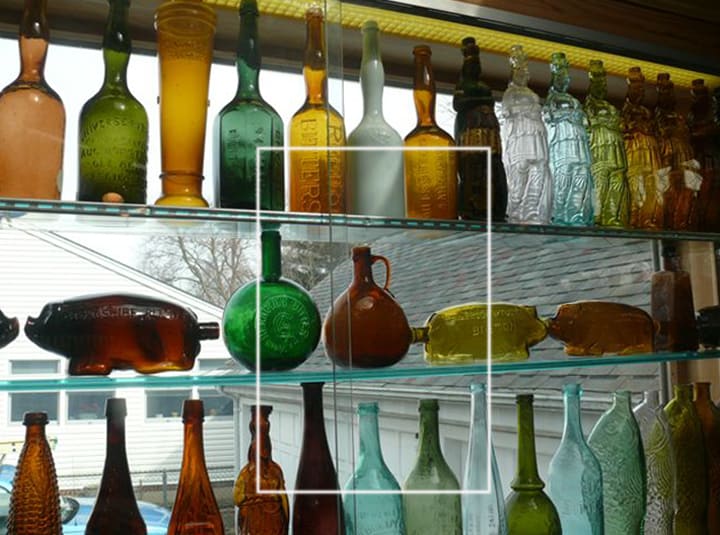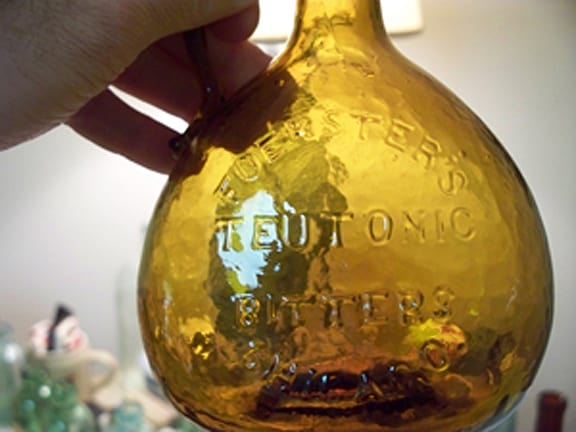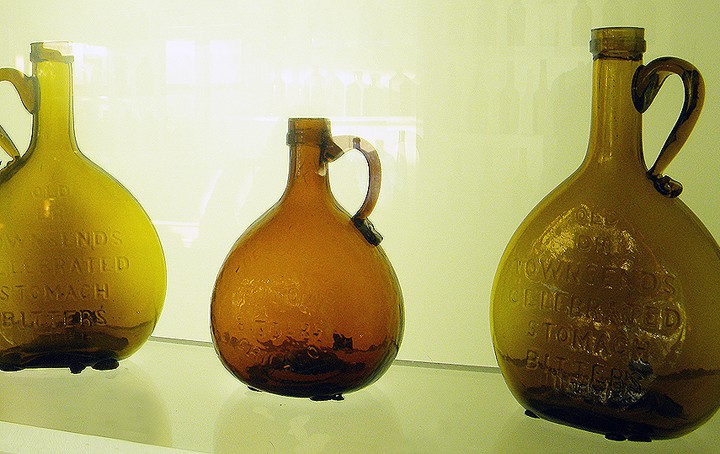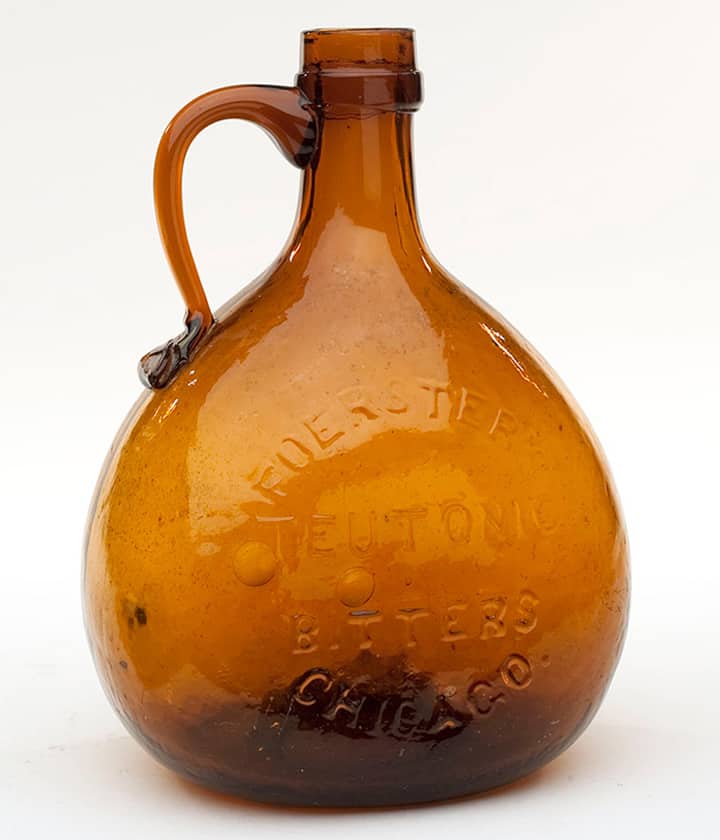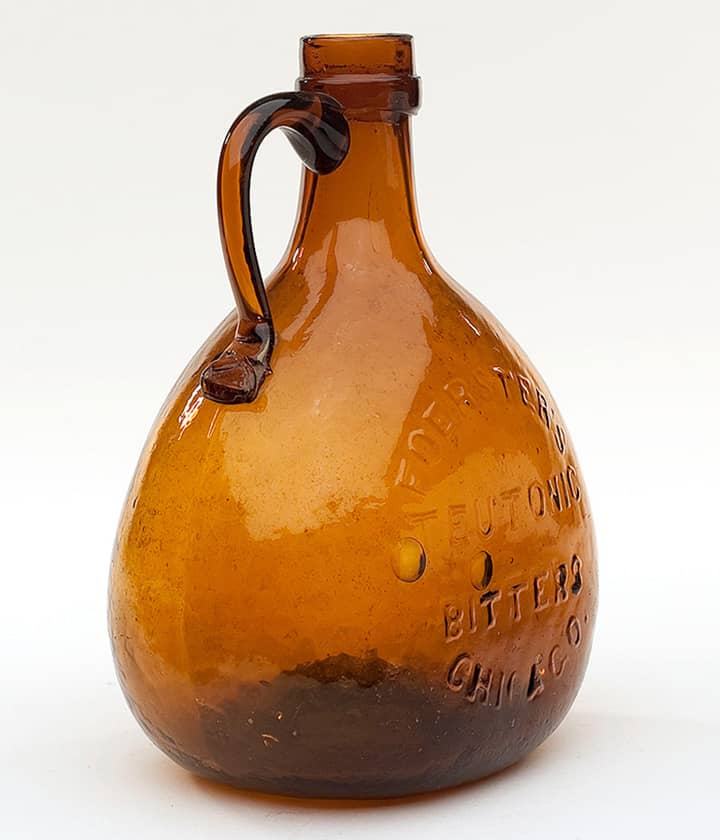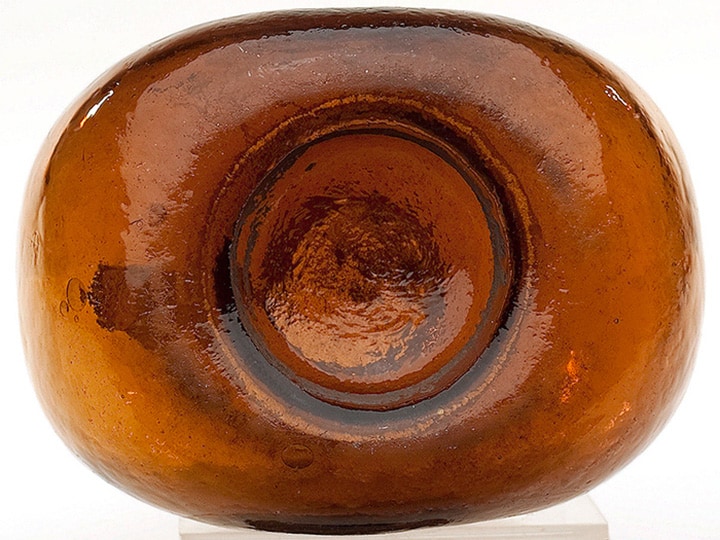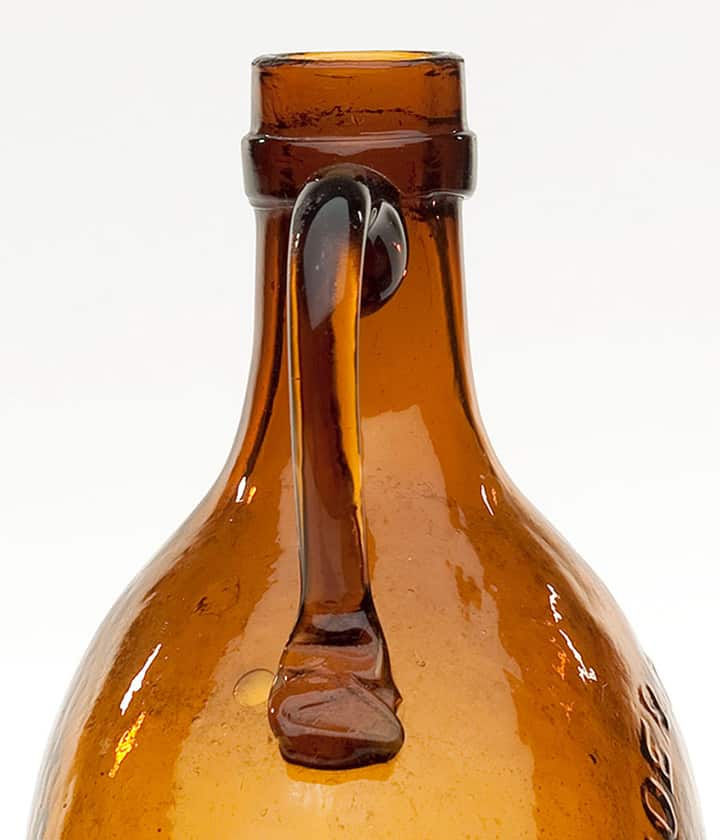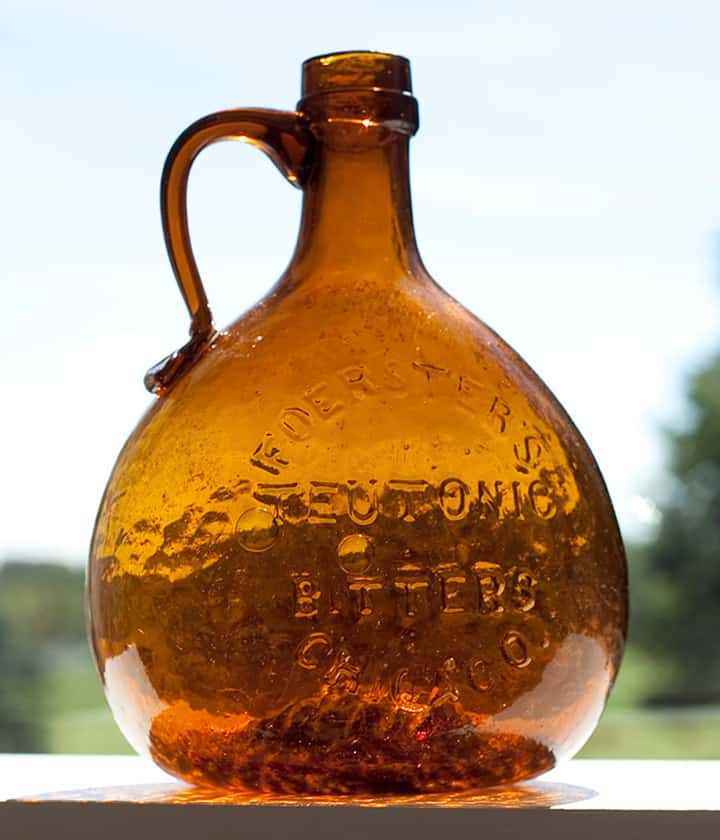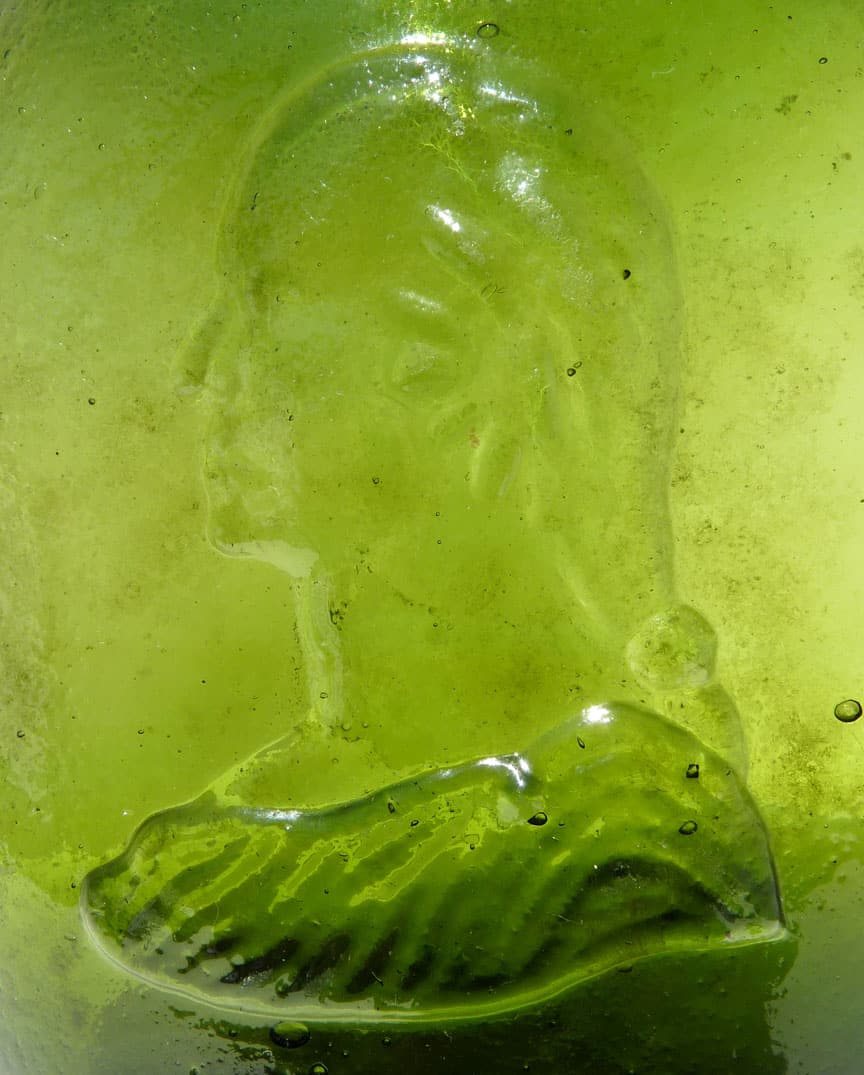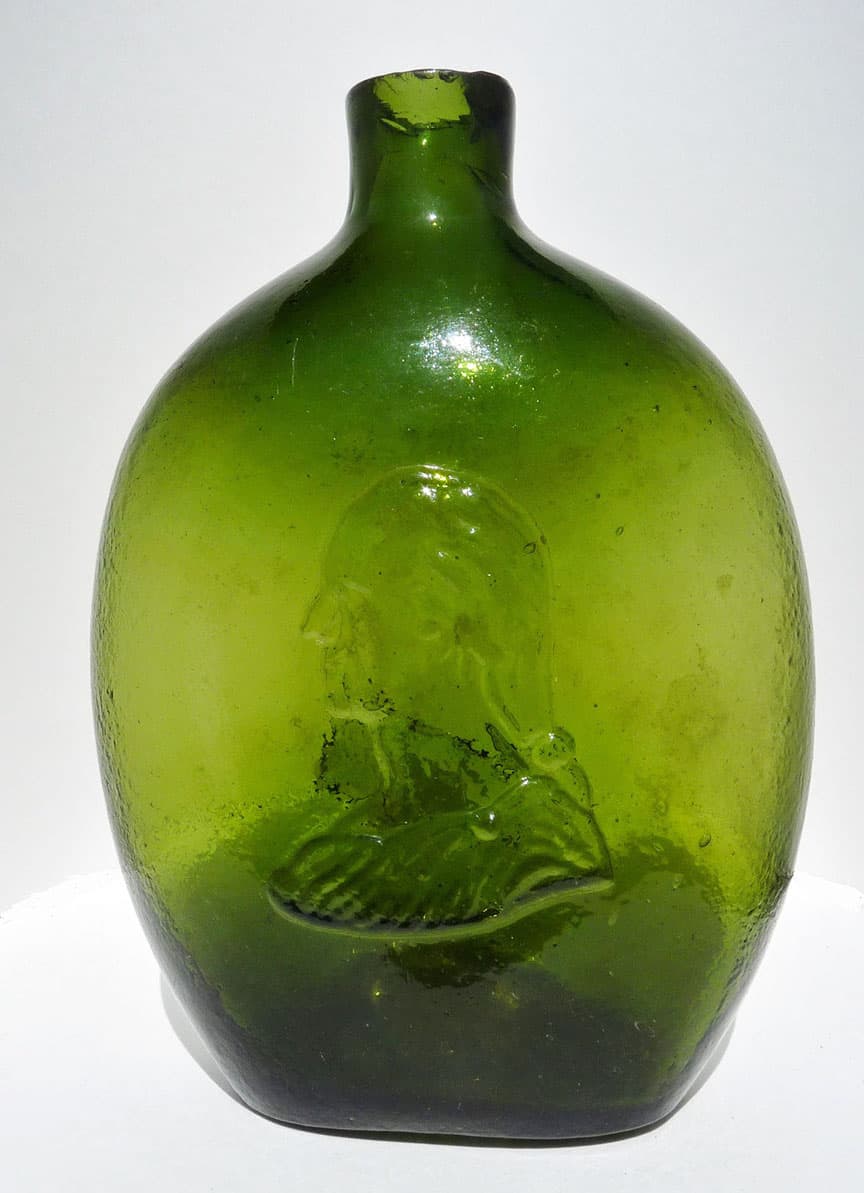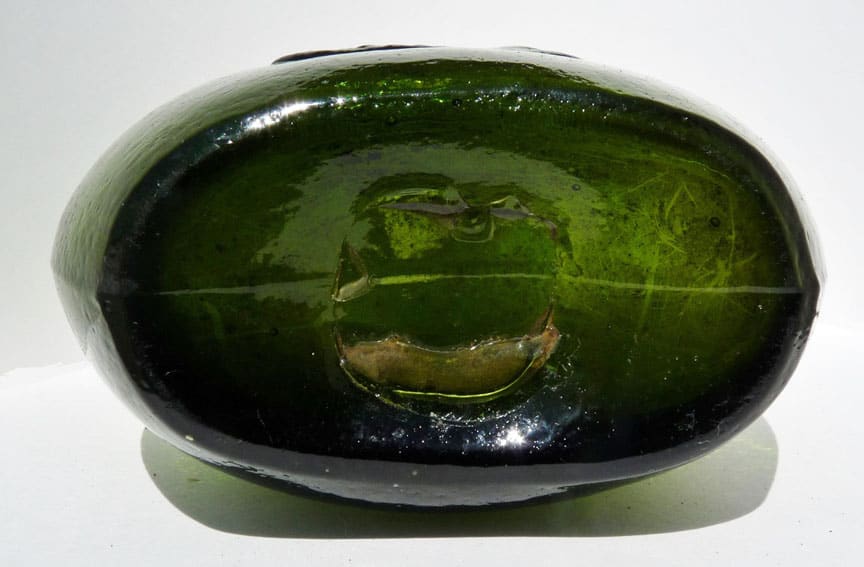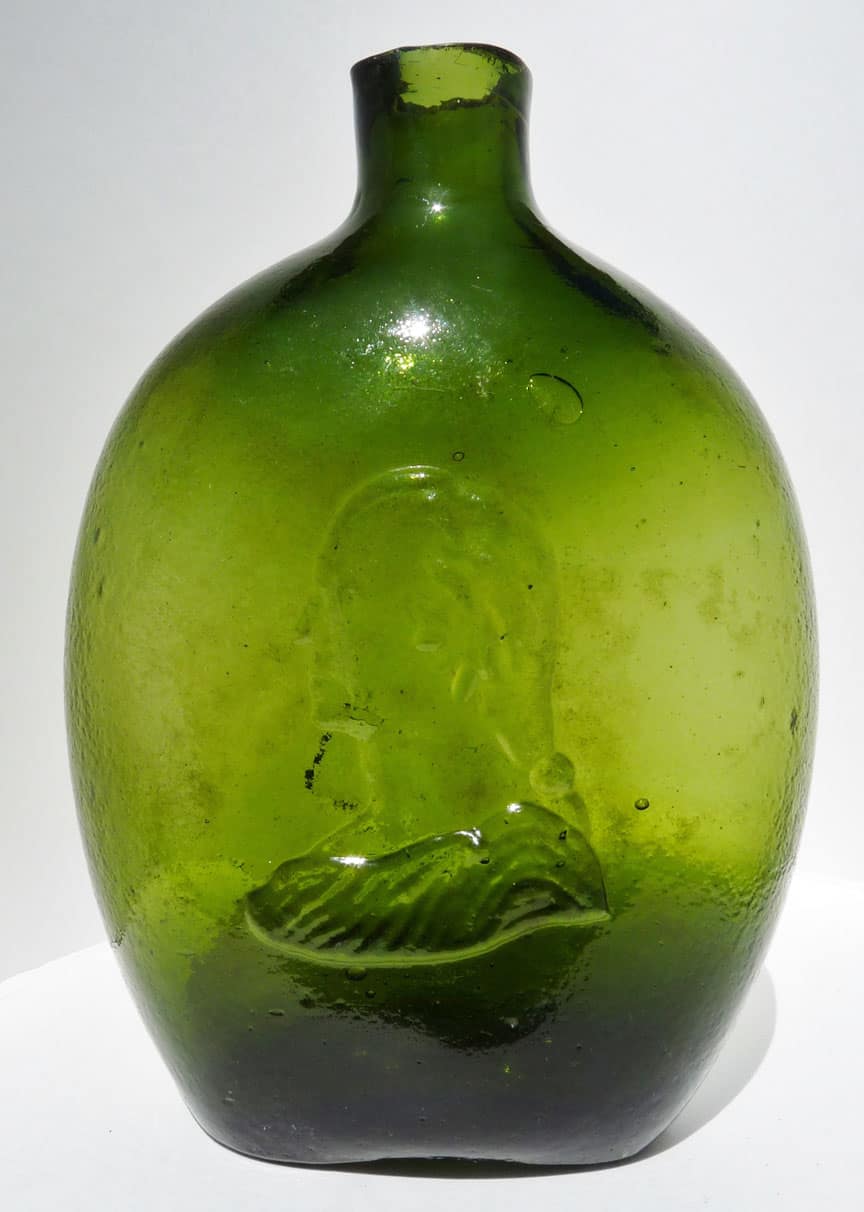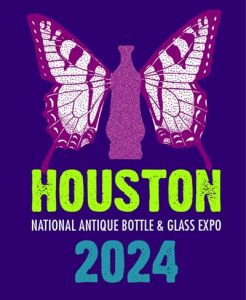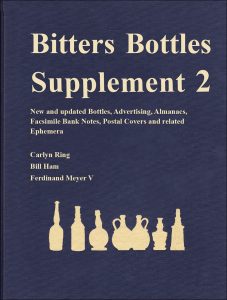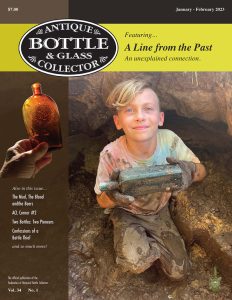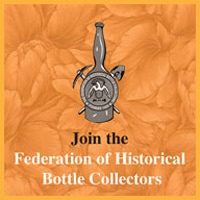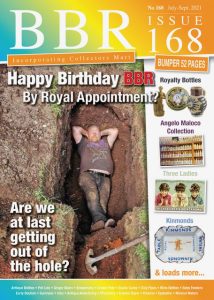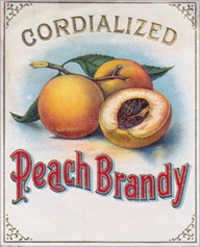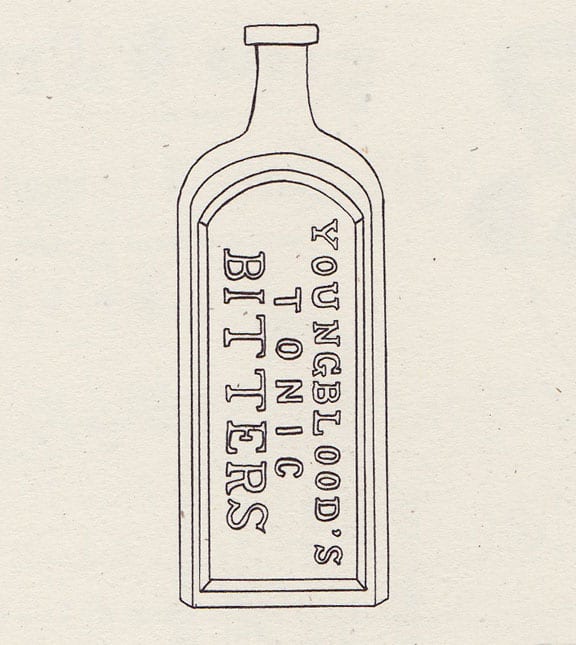
YOUNGBLOOD’S TONIC BITTERS
Galveston, Texas
05 July 2013 (R•111315 – glass shard) (R•031416 – Example)
Endorsed by Physicians, Clergymen, Planters, Merchants, Mechanics of every Nation.
 Here is a tough one that was included on the long time Texas bottle collector Doyle Bailey’s list of Texas Bitters that I recently received. The Youngblood’s Tonic Bitters was noted as embossed, with a paper label, and from Galveston, Texas (
Here is a tough one that was included on the long time Texas bottle collector Doyle Bailey’s list of Texas Bitters that I recently received. The Youngblood’s Tonic Bitters was noted as embossed, with a paper label, and from Galveston, Texas (bottle picture not available at this time). The Carlyn Ring and W.C. Ham listing in Bitters Bottles is as follows:
Y 8 YOUNGBLOOD’S TONIC BITTERS
YOUNGBLOOD’S / TONIC / BITTERS // sp // f // sp //
9 3/4 x 3 3/8 x 2 1/8 (7 1/2) 3/8
Rectangular, Amber, NSC, Applied mouth, 3 sp, Extremely rare
From Galveston, Texas
The only solid information I can find so far is the 1873 advertisement pictured below. Clues from this ad and other almost identical advertisements note a L. D. Youngblood, Sole Proprietor, Tyler, Texas. Also noted is a Jno. A. Johnston & Co. Proprietors and Manufacturers, Galveston, Texas. Besides Galveston, the Texas towns of Denison and Tyler, and the Oklahoma towns of Adair and Vanita also play into this bottle mystery and the Youngblood name.
Interestingly enough, there is a Dr. Youngblood who was killed by a stray bullet in a famous train robbery by the Dalton Gang. See news clippings below. The locales and time periods overlap. The first name initials do not. Probably just an interesting Red Herring,
Two stray bullets entered the drug store of the town, injuring Drs. Youngblood and Goff, who were sitting in the building at the time. Youngblood has since died and Goff is in a dangerous condition.
H. H. H. YOUNGBLOOD’S TONIC BITTERS
What does H. H. H. mean?
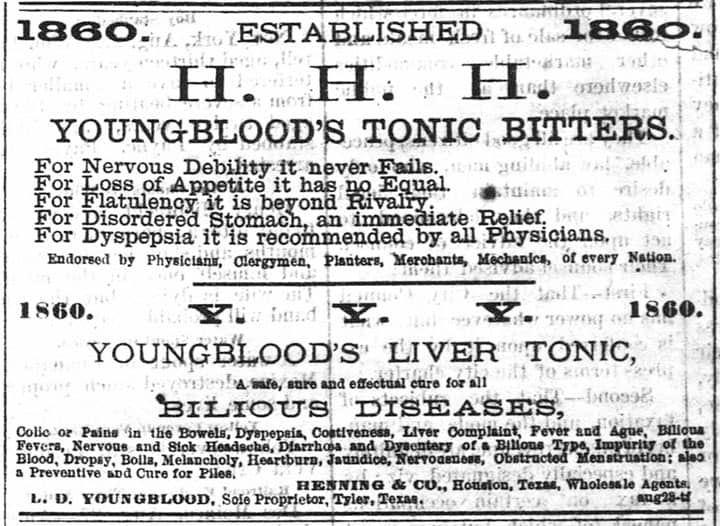
Advertisement for Youngblood’s Tonic Bitters and Youngblood’s Liver Tonic – Houston Daily Mercury (Houston, Tex.), Vol. 5, No. 304, Ed. 1 Thursday, August 28, 1873
Copy from a second similar advertisement
1860. ESTABLISHED 1860.
H. H. H.
YOUNGBLOOD’S TONIC BITTERS!
For Nervous Debility it never Fails.
For Loss of Appetite it has no Equal.
For Flatulency it is beyond Rivalry.
For Disordered Stomach, an Immediate Relief.
For Dyspepsia it is recommended by all Physicians.
Endorsed by Physicians, Clergymen, Planters, Merchants, Mechanics of every Nation.
————
1860. Y. Y. Y. 1860.
Youngblood’s Liver Tonic, A safe and effectual cure for all Bilious Diseases, Colic or Pains in the Bowels, Dyspepsia [sic], Costiveness, Liver Complaint, Fever and Ague, Bilious Fevers, Nervous and Sick Headache, Diarrhoea and Dysentery of a Bilious Type, Impurity of the Blood, Dropsy, Boils, Melancholy, Heartburn, Jaundice, Nervousness, Obstructed Menstruation [sic]; also, a Preventative [sic] and Cure for Piles.
JNO. A. JOHNSTON & CO. Proprietors, and Manufacturers, Galveston, Texas.
HERMAN MATSDORFF, Agent, Denison, Texas. Office at Dexter & Scott’s Drug Store.
(Denison Daily News, Vol II, No. 36, Denison, Texas, Sunday Morning, April 5, 1874)
The Dalton Gang Train Robbery
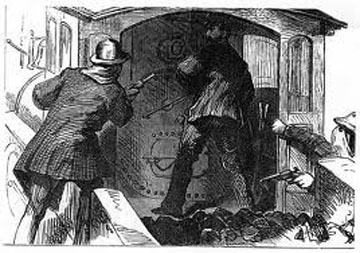
ROBBED – VICTIMS IN THE SKIRMISH
Galveston Daily News, July 16, 1892: VINITA, I. T., July 16. – [Special] – The Missouri, Kansas and Texas train No. 2 northbound was robbed at Adair, twenty miles south of this city, last night. For a week it has been known that the notorious Dalton boys with several associates, making a party of eleven, were in the country below here and the railroad company put guards on its night trains Monday and has continued them ever since. All eyes have been turned to Pryor’s creek as the point of attack, and until the train whistled for this station last night no one thought of Adair as the place of operation.
At the moment named several men surrounded Night Operator Haywood and ordered him to flag her down. As they were fully armed he had no alternative and complied. As the conductor stepped off the train he was made a prisoner and a moment later the entire crew were doing duty as breastworks. The officers were riding in the smoker and one of them loking out of the window saw the conductor’s lantern drop and knew in an instant they had found their men. They jumped off the train on the opposite side from the depot and found themselves right in the middle of the robbers with the latter, being accustomed to the dark, having the best of it. A short fight tookplace here, in which Detective J. J. Kinney of the railroad company was shot in the shoulder, an Indian policeman named Laflore was shot in his arms and an officer named Johnson had his watch shot to pieces, the same bullet embedding itself in his arm. About the same time that this fight was going on or immediately after a volley was poured into the Pacific express car and Messenger George P. Williams finally opened the door. Meantime the officers were compelled to desist firing lest they might shoot some of the train crew. The express local safe was quickly robbed and the messenger ordered to open the throughsafe. He declared he could not unlock it, but went to work and soon got the door open. While the express car was being rifled the operator was taken into the depot and ordered to open the station safe, but finally satified the men that he could not do so. The cash drawer was broken open and $3 or $4 secured from it. When the robbery was completed three or four of the men started down the street west from the depot, and 200 feet from there, sitting on a porch, they passed Dr.W. L. Gofe of Fredricktown, Mo., and Dr. T. S. Youngblood of Adair. They fired on them, and Gofe fell forward, exclaiming: “I am killed.” Dr. Youngblood, although shot in the leg started to run, but another bullet dropped him. He made his way to the depot and told what had happened and Dr. Gofe was picked up and found to be badly shot in both limbs. Youngblood got a shot in the leg and one in the foot. Both men were taken upon the train and brought to this city, where surgical aid could be obtained…
July 16, 1892 —Dallas Morning News—McAlester, I. T.—One of the most daring train robberies on record tool place last night at Adair, I. T. As the Missouri, Kansas and Texas north-bound express train pulled into Adair station the train was held up and everything of value to be found was taken.
The robbers previously had sent word to the railway company that the train would be robbed. All the deputy marshals and police that could be raised between McAlester and Muskogee were on board the train, but not expecting the robbery to take place at Adair the officers were overpowered and placed in a line on the platform and placed under guard until the robbery was competed.
As the bandits were leaving several shots were exchanged between the officials and outlaws. The chief of police, Charles Laflore, being wounded in the leg and arm, Detective Kinney wounded in the shoulder and two citizens of the town are reported killed. There were nine outlaws, all of whom made their escape.
It is definitely known that the Adair train robbery was committed by the Daltons. They reached the station about 9 o’clock, ransacked it of all the valuables and then calmly awaited the arrival of the passenger train at 9:42.
Two stray bullets entered the drug store of the town, injuring Drs. Youngblood and Goff, who were sitting in the building at the time. Youngblood has since died and Goff is in a dangerous condition.
BIG BOOTY SECURED
July 16, 1892—Dallas Morning News— Guthrie, OK—The Missouri, Kansas and Texas north-bound express was held up last night by the Dalton gang, but it seems they doubled successfully on the pursuers. The captured men evidently peached on the gang, revealing the plot of last night’s robbery for a posse of police was organized at Adair and the robbery was only accomplished after a hard fight in which Chief Detective Kinney, Indian Policeman Laflore and two doctors, passengers on the train, were seriously wounded. None of the passengers coming to their aid and their revolvers being empty they were forced to retreat into the train.
The Dalton boys then compelled the messenger to open the express car, blew open the safe, quickly secured its contents and after relieving the messenger of his watch bound and dumped him in a corner of the car, leaped to the ground, fired several shots and disappeared.
After it was certain the robbers had gone the train ran to Adair, the alarm was sounded and a posse was hastily formed and returned to the scene of the robbery. That the Daltons headed the gang themselves is beyond doubt. The officers are reticent, but it is reliably ascertained that the bandits secured between $80,000 and $70,000.
FORTY THOUSAND DOLLARS REWARD
July 16, 1892—Dallas Morning News—Denison, Texas—Passenger train No. 2 on the Missouri, Kansas and Texas, which left the city yesterday evening at 12:30 o’clock, was held up and robbed by a band of desperadoes at Adair, a siding fifteen miles south of Vinita, I. T. The raid has been expected by the company several days and an extra force of deputy marshals was on the train at the time. The robbers, however, got the drop on a number of the officers and while they were held at bay the remainder of the gang went through the train and captured everything in sight. The federal mails were rifled, the express company’s safes were forced open and it is rumored that $60,000 was captured.
The train was in charge of Conductor George Scales and was pulled by Engineer Ewing. The following reward has been offered by the Missouri, Kansas and Texas railroad company and the Pacific express company;
Reward—The express car o the north-bound train of the Missouri, Kansas and Texas railway was robbed by masked men at Adair, I. T. Thursday night, July 14. A reward of $5000 will be paid by the undersigned for the arrest and conviction of each of the men engaged in this robbery to an amount not exceeding $40,000.
Missouri, Kansas and Texas Railway Company, by Thomas C. Purdy, second vice-president
Pacific Express Company, by L. A. Fuller, superintendent.
Topmost bottle illustration courtesy of Bill Ham.
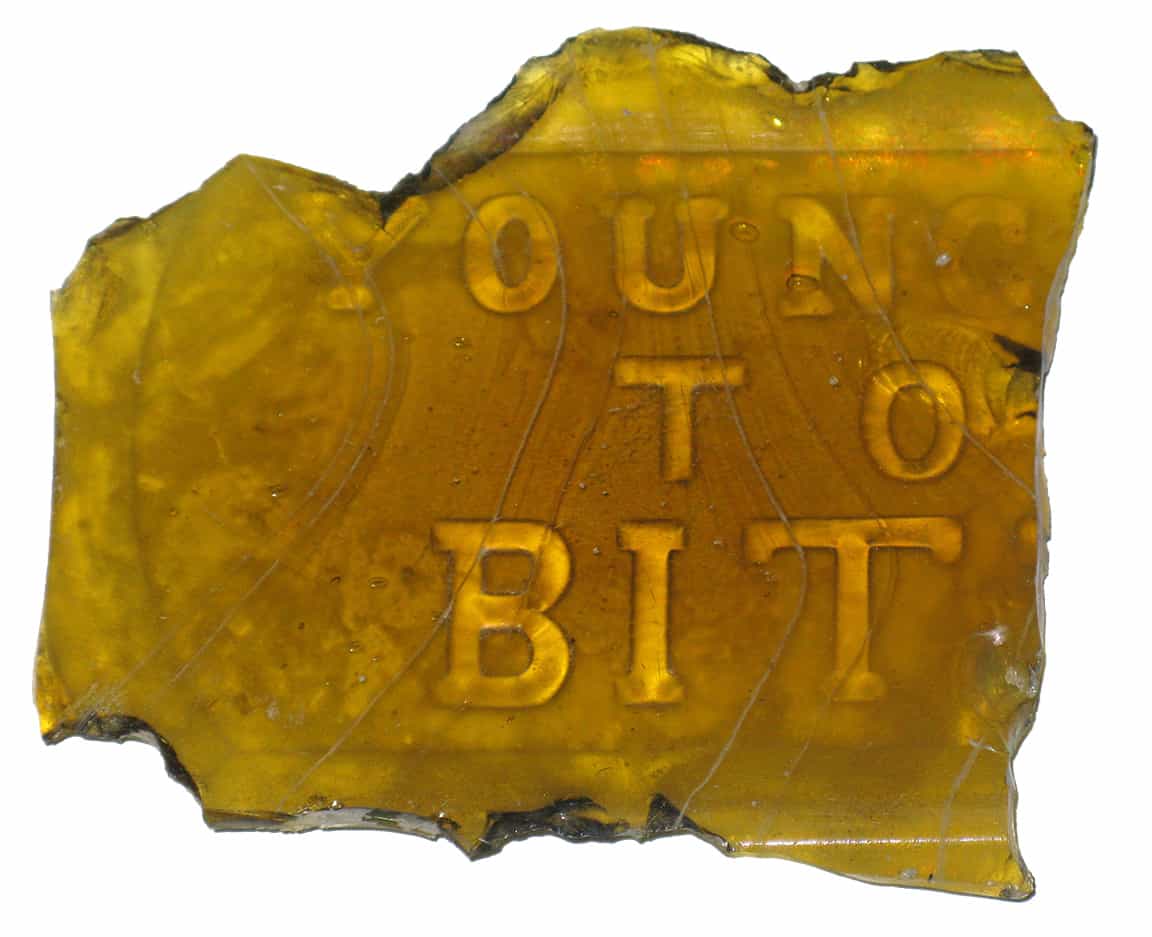
[11-13-15]
Ferdinand, Dug a broken Youngblood’s Tonic Bitters in Galveston the other day. Honestly didn’t have a clue what it was so only saved the front panel and the lip. When I go back to the site, I am going to re-excavate the pit (it is just a tiny trash pit) and see if I can find enough to glue together a good part of the bottle. Pit was full of broken Hostetters, Wolfe’s Schnapps, etc…looked to be late 1860’s or maybe early 1870’s.
Thought you might be interested…it is a beautiful light amber color.
Best Regards,
Brandon DeWolfe, P.E.
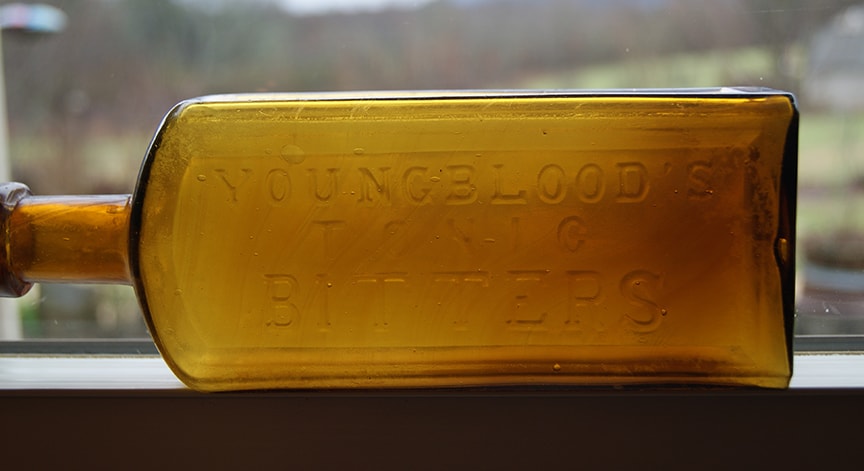
Youngblood’s Tonic Bitters
![]() A really cool, labeled, Jackass Bitters strap-sided flask is making an appearance at the Glass Works Auction #99 “Madness in Manchester” event that will culminate in a live auction on 20 July at the 2013 FOHBC National Antique Bottle Show. Whether this is a political statement, a reference to the jackass bitters plant or a reference to how someone acts, it is a great name and a wonderful bottle. I suspect a little of each. It is also nice to see the Carlyn Ring collection sticker on the bottle.
A really cool, labeled, Jackass Bitters strap-sided flask is making an appearance at the Glass Works Auction #99 “Madness in Manchester” event that will culminate in a live auction on 20 July at the 2013 FOHBC National Antique Bottle Show. Whether this is a political statement, a reference to the jackass bitters plant or a reference to how someone acts, it is a great name and a wonderful bottle. I suspect a little of each. It is also nice to see the Carlyn Ring collection sticker on the bottle.
